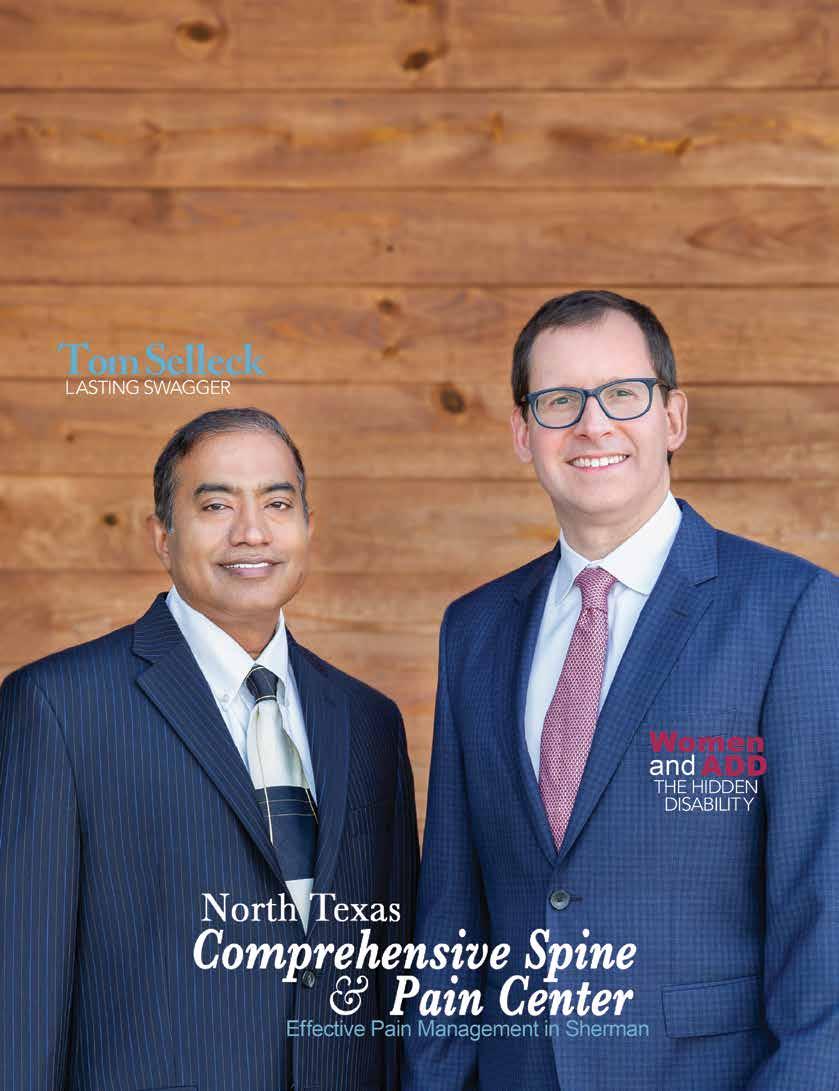
TEXOMA AREA
JULY/AUGUST 2020 Living Well Living Well A Health & Lifestyle Magazine for THRIVING ADULTS TM

At Texoma Orthopedic and Spine, we are dedicated to providing our patients with the highest quality treatment of Orthopedic injuries and disorders for patients at all stages of life. Our physicians, Mark Young, MD; Brian T. Rose, MD; C. Craig Cranford, DPM; and Benjamin Wilson, MD, believe in improving quality of life by providing their patients with education as well as top-notch surgical, non-surgical, diagnostic and therapeutic treatment options.
We provide a full range of surgical and non-surgical treatment options for a variety of orthopedic conditions, including osteoarthritis of the joints, sports injuries and fractures of the upper and lower extremities, as well as neck and back pain.

Mark Young, MD
Orthopedic Surgery & Sports Medicine
Surgical Services:
• Hip to Total Joint replacement
• ACL Reconstruction
Spotlight on our Surgeons
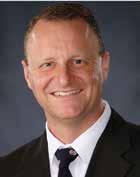
Brian T. Rose, MD, FAAOS
Orthopedic Surgery of the Spine
Surgical Services:
• Spinal Fusion
• Kyphoplasty
• Total Joint Replacement including Knee and Shoulder
• Fracture Repair
• Carpal Tunnel Release
• Rotator Cuff Repair
• Arthroscopic wrist, knee and shoulder surgery
• Cervical Disk Replacement
• Microdiskectomy
• Spinal Decompression
• Interlaminar Stabilization
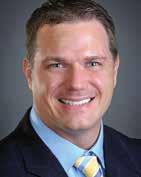
C. Craig Cranford, DPM, MPH, FACFAS Foot and Ankle Surgery
Surgical Services:
• Foot and Ankle Trauma and Reconstruction
• Fracture repair
• Flat Foot Reconstruction
• Total Ankle Replacements
• Bunion Repair
• Hammertoe Repair
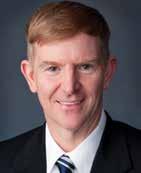
Benjamin Wilson, MD, FAAOS Orthopedic Surgery
Surgical Services:
• Total Joint Replacement including Hip, Knee and Shoulder
• Fracture Care and Repair
• Hand Trauma and Soft Tissue conditions
• Arthroscopic Knee and Shoulder Surgery
• Joint replacement in small joints
• Charcot reconstruction
• Foot and Ankle arthritic conditions
• Plantar fasciitis
• Achilles Tendon Repair
Therapy Services:
• Orthopedic Care
• Manual Physical Therapy
• Manipulation based therapy
• Dry needling
• Cupping
• Individualized exercise programs
• Sports and injury prevention programs
• Vestibular rehabilitation
• Balance and fall prevention programs
• Pre- and Post-Operative therapy

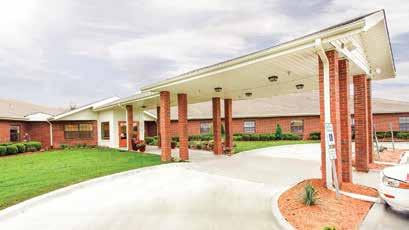
• ACL Reconstruction


Taylor Denney, PT, DPT
Julie Harbison, PTA
Jared Bourne, PT, DPT

See our website for more information about our back and neck pain treatment options (903) 465-2190 5012 U.S. Hwy. 75, Ste. 120 Denison, Texas 75020 (Next to Texoma Medical Center) Texoma Orthopedic and Spine has on-sta therapists to make sure your doctor is in close communication regarding your therapy during your rehabilitation process. w w w.texomaor thospine.com
'LIKE US' ON FACEBOOK






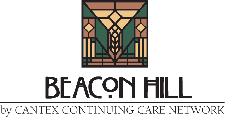
1 TEXOMA AREA Living Well Magazine | JULY/AUGUST 2020 Healing and Care in a Beautiful Environment 3515 Park Avenue Denison, TX 75020 903-327-8537 903-327-8794 (Fax) 999 Raintree Circle Allen, TX 75013 972-390-8088 866-574-1006 (Fax) THE BELMONT AT TWIN CREEKS • ALLEN, TEXAS by CANTEX CONTINUING CARE NETWORK Cantex Continuing Care Network is committed to providing the highest level of services to promote recovery and restore independence. We are passionate about patient safety and well-being, devoted to innovation, and dedicated to values of compassion and service. www.cantexcc.com “Where we are committed to excellence” 1400 Black Hill Drive Gainesville, TX 76240 940-665-5221 866-660-7907 (Fax) RENAISSANCE CARE CENTER by Cantex Continuing Care Network


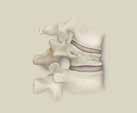
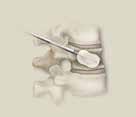
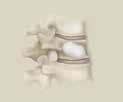




Brian Rose, MD D. Bruce Ramsey, MD Denison, TX Sherman, TX 903-465-2190 John Pulliam, MD Sherman, TX Paris, TX 903-957-3230 903-893-5177 Gary Bloomgarden, MD Denison, TX 903-416-6460 J. Keith Preston, MD 903-737-9999







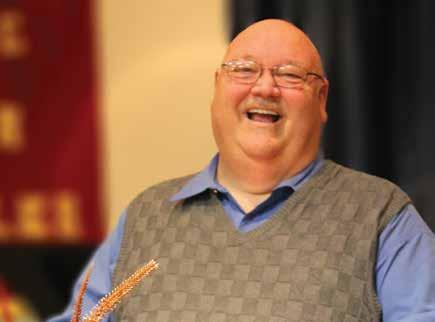



“We Chose WNJ!” wnj.org | 903-870-4611 | 500 N. Highland in Sherman Highly-qualified Doctors & Staff • Women’s Center • Level II Primary Stroke Center • Level III Trauma Center Family-friendly Maternity Suites • Excellent Cardiac Care • Dedicated Trauma/Orthopedics/Surgery Unit Behavioral Health Services Inpatient Facility “We Chose WNJ!” wnj.org | 903-870-4611 | 500 N. Highland in Sherman Highly-qualified Doctors & Staff • Women’s Center • Level II Primary Stroke Center • Level III Trauma Center Family-friendly Maternity Suites • Excellent Cardiac Care • Dedicated Trauma/Orthopedics/Surgery Unit Behavioral Health Services Inpatient Facility
Dr. Grant Craig Pastor Terry Barnett
Natalie, Jeremy and Champ Roberts Mayor David and Mignon Plyler

MASK UP!
Our world has changed. Humanity is facing extraordinarily challenges in the fight against COVID-19. The virus has impacted every aspect of our lives and changed our community fundamentally.
Local businesses are trying to adapt, reinvent and find their way, while conflicting information swirls as how best to proceed during these uncertain times. One thing appears to be clear, if we are to move forward, we all need to do a part in slowing the spread of the virus.
With that in mind, LIVING WELL is joining the cacophony of voices in the community urging everyone to wear a mask in public spaces to safeguard yourself and others from potential exposure to COVID-19. By doing so, you’re helping slow the spread of the virus to hopefully protect others, while helping the efforts of local businesses to continue serving the area.
On the subject of serving the community, North Texas Comprehensive Spine & Pain Center’s doors are open during these challenging times to treat those suffering from chronic pain. A hard working, dedicated team of doctors, medical assistants, nursing, physical therapy, and anesthesia staff utilize a combination of therapies to treat pain at the center’s Sherman and Rowlett locations. From medications, injections, physical therapy, counseling, and minimally invasive procedures, a multidisciplinary approach of combining different treatments offers patients a comprehensive approach to alleviating pain. Read more about this local medical practice inside.
Now, more than ever, we implore you to support local, including the area businesses you see inside. The pandemic has brought our local economy––and many of the advertisers who support this magazine––to a near standstill. The people behind these businesses are not only leaders in their respective fields, they live in this community and care about it. Please consider utilizing their valuable services.
Sincerely,
Sam
and Spring Houston
PRESIDENT & CEO
Sam Houston
VICE PRESIDENT & CFO
Spring Houston
FEATURE WRITER, COPY EDITOR AND SOCIAL MEDIA DIRECTOR
Sondra Barr
ART DIRECTOR, LAYOUT, PRODUCTION & WEBSITE DESIGN
Lewis Schucart
ADMINISTRATION AND ACCOUNTS MANAGEMENT
Jennifer Beavers
ADVERTISING/SALES
Texas | Denton County, Dallas County, Collin County
Texas & Oklahoma | Texoma
WRITE TO US. Tell us who you would like to see featured on the cover, or what subjects you would like covered in upcoming editions of LIVING WELL Magazine at info@livingwellmag.com.
SUBSCRIPTIONS/CUSTOMER INQUIRIES
Houstons of Dallas Publishing, Inc. 102 E. Broadway, #901 Prosper, TX 75078
www.LivingWellmag.com
Phone: 214-507-1000 Fax: 855-248-2132
LIVING WELL Magazine is a source for quality educational articles on living a healthy, vibrant life. Our focus is on connecting our readers with the latest information on a host of topics relevant to their evolving life. From cutting edge medical news and procedures to top-tier financial, legal and lifestyle information. Connecting readers to leading medical and business professionals in their community in Texas and Oklahoma.



'FOLLOW US'
FACEBOOK.COM/LIVINGWELLMAG
'FOLLOW US' @LIVINGWELLMAGS
'FIND US' INSTAGRAM.COM/LIVINGWELLMAGS
All advertisements in this Magazine are placed by third parties. We do not control or endorse either the advertisements or their content. Further, we do not manufacture, sell, distribute or provide any of the goods or services advertised herein. We hereby expressly disclaim any liability with respect to the information or goods and services contained herein. We further disclaim any and all warranties or representations, express or implied, with respect to such information, goods or services, including any warranty of merchantability or fitness for a particular purpose (it being understood that we do not acknowledge that any such warranty exists). We are not liable or responsible for any loss, injury, damage, or harm that you may suffer as a result of the information contained in any advertisement or goods or services contained herein. “We” refers to the name of this Magazine, and all versions of Living Well Magazine, Senior Magazine, as well as Houstons of Dallas Publishing, Inc.
TEXOMA
A Health & Lifestyle Magazine for THRIVING ADULTS TM 4 TEXOMA AREA Living Well Magazine | JULY/AUGUST 2020 FROM THE PUBLISHER
AREA Living Well Well



5 TEXOMA AREA Living Well Magazine | JULY/AUGUST 2020 in this issue features CONTENTS on the cover JULY/AUGUST 2020 Visit LivingWellMag.com for a free digital subscription FREE DIGITAL SUBSCRIPTION WOMEN & ADD THE HIDDEN DISABILITY 44 TOM SELLECK LASTING SWAGGER 24 13 Who is Your Power of Attorney? 16 Accidental Poisoning 19 Faster Healing with EPAT 30 Evolving in a Time of Crisis 34 Dealing with Loss 37 Understanding Hearing Loss 41 Excuse Me While I Burp 48 Dealing with Allergies NORTH TEXAS COMPREHENSIVE SPINE & PAIN CENTER EFFECTIVE PAIN MANAGEMENT IN SHERMAN 8


Total

Total

Partial
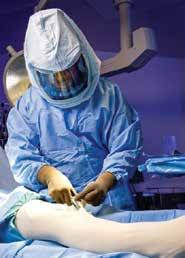




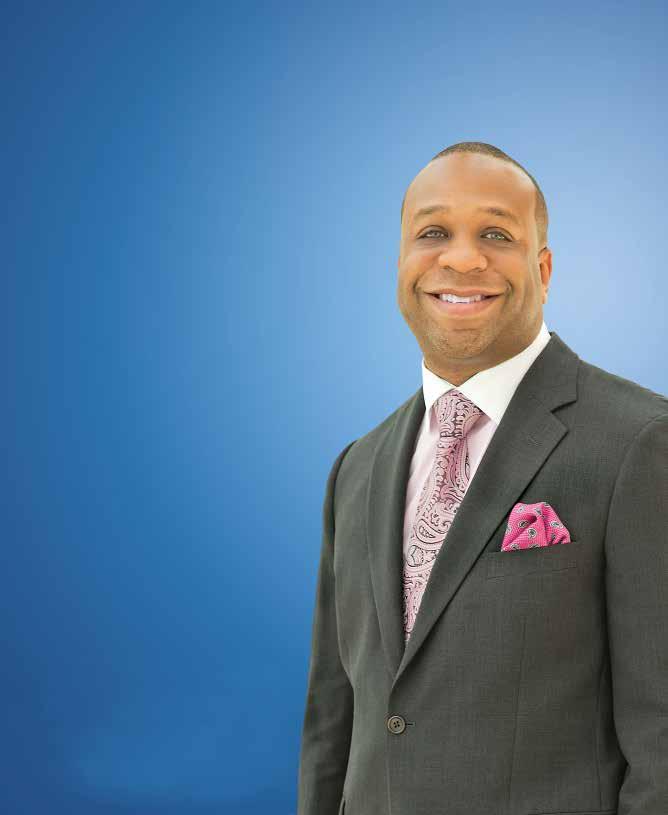
HIP
KNEE
Top Doc
Dallas County and
County. Dr. Toulson is proud to serve local residents and surrounding communities. Dr. Charles Toulson specializes in: Robotic Joint Replacement
PREMIER SURGEON FOR
AND
REPLACEMENT Voted
in
Collin
Hip Replacement
Knee Replacement
Knee Replacement To learn more, visit AlphaOrtho.net TOP DOCS 2018 PROVIDERS HEALTHCARE AND OTHER Livingwell Alpha Orthopedics & Sports Medicine 6850 TPC Drive, Suite 116 McKinney, Texas 75070 972-362-0065 Alpha Orthopedics & Sports Medicine 204 Medical Drive, Suite 110 Sherman, Texas 75092 972-362-0253 Alpha Orthopedics & Sports Medicine 170 N. Preston Road, Suite 40 Prosper, Texas 75078 972-362-0196











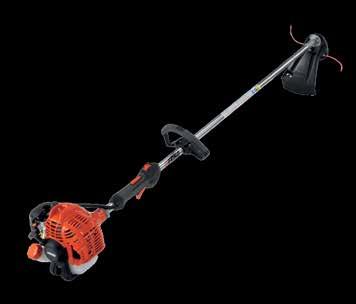












Full Page Ad www.planopower.com 1414 N. Central Expy. Plano, TX 75074 (972)423-5220 CUTMOWINGTIMEINHALF 0 % RETAIL FINANCING Starting @ just $99/mo FULLYSERVICED&READYTOGOTOWORKFORYOU WHY THE ONLY BRAND WITH: •100% PRO GRADE ENGINES •5 YEAR CONSUMER WARRANTY •100% 2 CYCLE ENGINES (best technology) Starting @ $149.99
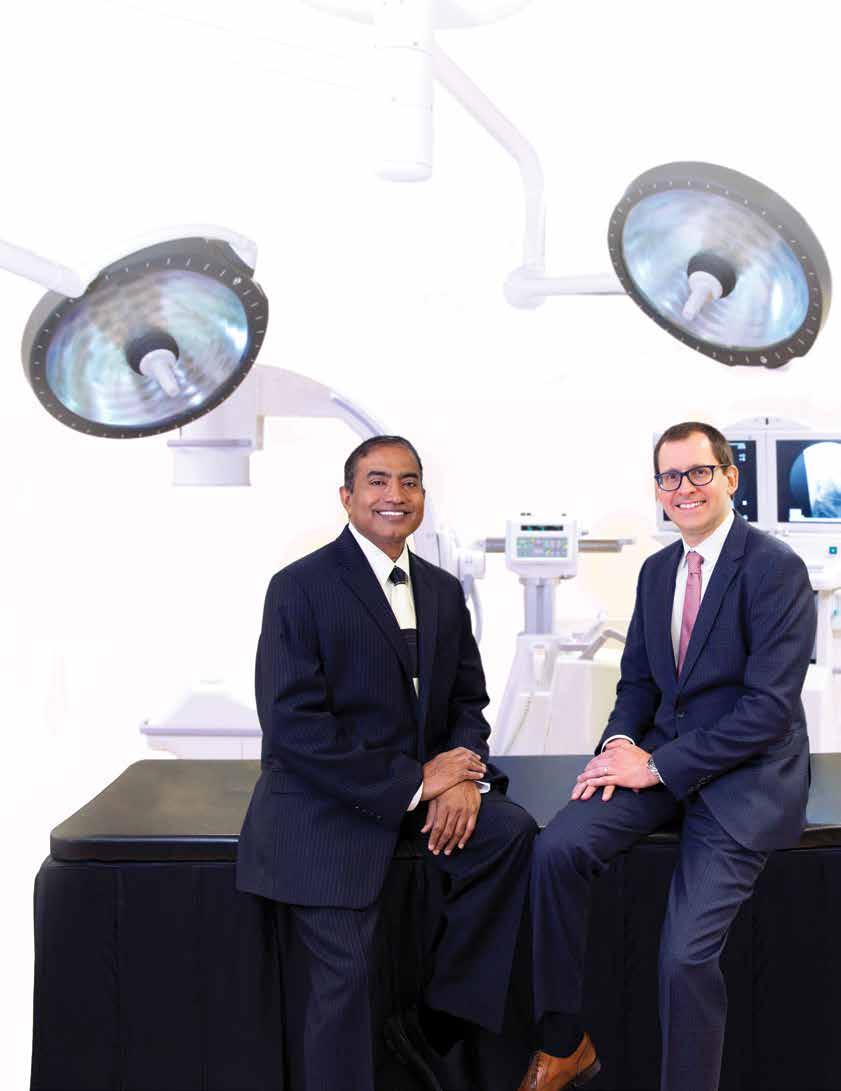
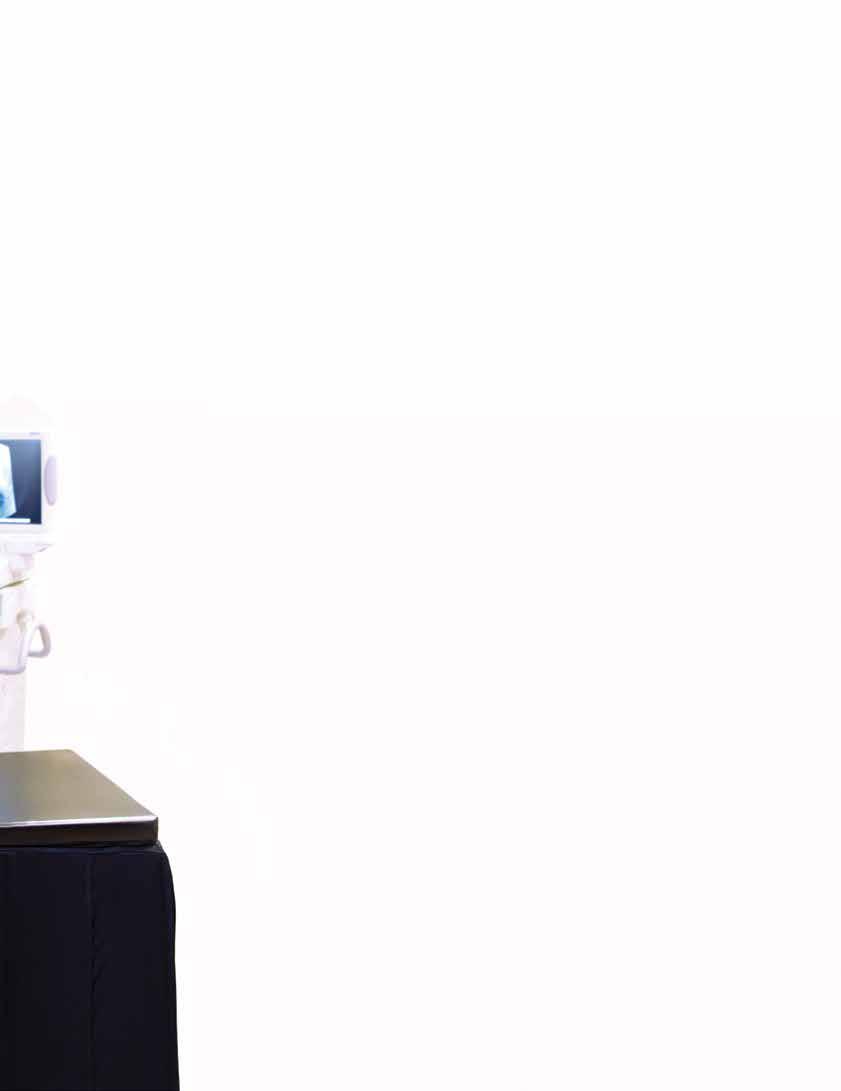
JULY/AUGUST 2020 SPOTLIGHT


NORTH TEXAS COMPREHENSIVE
SPINE & PAIN CENTER
Effective Pain Management in Sherman
Dr. Vattam, of North Texas Comprehensive Spine & Pain Center, is board certified in physical medicine and rehabilitation and pain medicine through the American Board of Physical Medicine and Rehabilitation. He completed his residency in PM&R, and his fellowship in pain medicine at UT Southwestern in Dallas, Texas. He went on to serve as faculty member at UT Southwestern, where he trained resident doctors and medical students. Dr. Vattam has hospital affiliations with Texoma Medical Center in Dennison, TX, Wilson N. Jones Regional Medical Center, and Baylor, Scott and White Surgical Hospital in Sherman, Texas.
Dr. Nocerini is board certified in anesthesiology and pain medicine by the American Board of Anesthesiology. He completed a residency in anesthesia and fellowship training in pain medicine in the Department of Anesthesia and Pain Management at UT Southwestern in Dallas, Texas.
Both Dr. Vattam and Dr. Nocerini are experienced in many pain procedures, including more advanced minimally invasive procedures, such as spinal cord stimulation, intrathecal pain pumps, Vertiflex, kyphoplasty, and sacroiliac joint fusion, all of which they perform at North Texas Comprehensive Spine & Pain Center.
OUR GOAL
At North Texas Comprehensive Spine & Pain Center, our goal is to decrease your pain, improve your function and your overall enjoyment of life using a combination of therapies, including medications, injections, physical therapy, counseling, and minimally invasive procedures. This multidisciplinary approach of combining different types of treatment can be more effective than using just one treatment modality.
We begin each visit with questions about the history of your pain, how long you have had it, what kind of activities or movements make it better or worse, what kind of treatments you have had for it in the past. A physical examination gives us additional important information about where your pain may be coming from. With a history and exam we can narrow down to the likely source of pain, but often we will need imaging studies, such as x-rays or MRIs, to confirm the location of your pain.
In our Sherman office, we also offer physical therapy to our patients. This is often an important part of our care plan. Medications and injections may help your pain, but with physical therapy, you can rebuild strength, flexibility, and endurance so that you can rehabilitate your body and regain function that chronic
Continued, page 11
9 TEXOMA AREA Living Well Magazine | JULY/AUGUST 2020
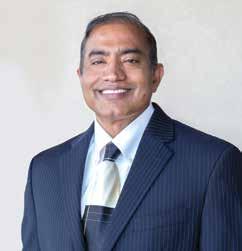
Sreenadha Vattam, MD
Board Certified in Pain Management Physical Medicine and Rehabilitation

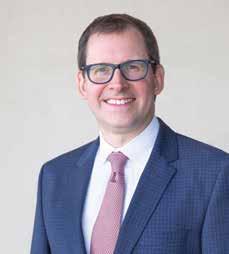
Robert J. Nocerini, MD
Board Certified in Pain Management Board Certified in Anesthesiology
PROCEDURES WE PERFORM
• Epidural/Transforaminal Steroid Injections
• Selective Nerve Root Blocks
• Cervical/Lumbar Medial Branch Blocks
• Radiofrequency Ablation (Rhizotomy)
• Intraarticular Joint Injections (Shoulder, Hip, Knee)
• Sympathetic Nerve Blocks
• Intrathecal Pain Pump
• Vertiflex/Superion for Lumbar Spinal Stenosis
• Sacroiliac Joint Fusion
• Discography
• Vertebroplasty/Kyphoplasty
• Spinal Cord Stimulation
• Facial injections, including Gasserian Ganglion and Sphenopalatine Ganglion Block

Mike Conner, APRN, FNP-C Nurse Practitioner
CONDITIONS WE TREAT
• Sciatica/Radiculopathy
• Spinal Stenosis
• Facet Joint Pain
• Spondylosis
• Postlaminectomy Syndrome/Failed Back Surgery Syndrome
• Herniated Discs
• Degenerative Disc Disease
• Degenerative Joint Disease
• Spinal Compression Fractures
• Low Back Pain
• Neck Pain
• Myofascial Pain Syndrome
• Carpal Tunnel Syndrome
• Peripheral Neuropathy
• Shingles
• Pelvic Pain
• Abdominal Pain
• Chest Pain
• Headaches/Facial pain
• Spinal Cord Injury Pain
• Cancer Pain
JULY/AUGUST 2020 SPOTLIGHT 10 TEXOMA AREA Living Well Magazine | JULY/AUGUST 2020
Continued from page 9
pain has taken away from you. Many of our patients enjoy therapy after experiencing its benefits.
Chronic pain can wear a person down physically, but it can also have negative psychological effects. Many individuals with chronic pain experience depression and anxiety. We regularly screen for these conditions and offer referrals for psychological counseling or a consultation with a psychiatrist if needed. This is done in connection with a smartphone app our patients can use to track their pain levels, mood, sleep, and functioning.
Injections and minimally invasive procedures are a big part of our practice and play an important role in decreasing your pain. We are able to perform many of these procedures in our office fluoroscopy suite, and we also perform
more advanced minimally invasive procedures in our ambulatory surgery center, which is adjacent to our clinical office. This offers the convenience of being able to come to the same location for your office visits, physical therapy, and procedures. We are also close to TMC hospital and a Baylor imaging facility, which is convenient for scheduling x-rays and MRIs.
Often, care of chronic pain requires more than a pain physician. We have strong long-term relationships with multiple specialists in the Sherman/Dennison area. We regularly refer to orthopedics, spine surgery, rheumatology, psychiatry, and neurology.
With injections and minimally invasive surgical procedures, we are able to treat many sources of pain.
We enjoy being part of the Sherman community, and we are privileged to be able to serve our wonderful patients. We have a hard working, dedicated team of medical assistants, nursing, physical therapy, anesthesia, office and ASC staff that will treat you with respect and try to brighten your day with each visit. We look forward to the opportunity to care for you.

North Texas Comprehensive Spine & Pain
11 TEXOMA AREA Living Well Magazine | JULY/AUGUST 2020
ShermanPain.com
Center
SHERMAN OFFCICE 1001 Sara Swamy Drive, Ste. #220 Sherman, TX 75090 903.902.1999 ROWLETT OFFICE 7700 Lakeview Parkway Rowlett, TX 75088 469.653.0222

903.813.8500 805 North Travis Street Sherman Texas 75090 Certified As An Elder Law Attorney by The National Elder Law Foundation As Recognized by the Texas Board of Legal Specialization CraigWatsonLaw.com state Tax Planning - Wills, Living Trusts, Asset Protection, Wealth Transfer Planning Elder Law - Nursing Home Medicaid Quali cation Probate, Guardianships, Will Contests & Probate Litigation Corporations, Partnerships, LLCs, LLPs Business Law - Ownership Succession, Sales & Purchases of Companies Over 25 Years of Experience Craig W. Watson ATTORNEY AT LAW Craig W. Watson o ers years of experience combined with a current knowledge of the rules of law that govern situations a ecting us as we grow old, or nd ourselves managing the a airs of a parent or other relative.

WHERE DID YOU GET YOUR POWER OF ATTORNEY?
By Craig Watson
John’s parents were in their 90s. They had banked at Big Bank for most of their life. They even owned stock in Big Bank since it was listed on the NYSE. When John’s Dad died, his mother signed a Statutory Power of Attorney that John obtained from the lawyer who handled his divorce. John, his three brothers and his mother wanted to set up her estate to avoid probate. His mother had over $500,000 in her checking account at Big Bank and another $750,000 in certificates of deposit (CDs) scattered at several local banks. He wanted to move some of the money to another bank in order to keep the deposit amount under the FDIC insurance maximum limit. The banker suggested that his mother should use a “payable on death” (POD) beneficiary form to change her account so that her money would pass equally to her four sons without probating her will. The banker told John that by adding her four sons to her accounts, her FDIC coverage at Big Bank would be increased to $1,250,000.
However, the banker insisted that his mother sign a new power of attorney on a standard power of attorney form supplied by Big Bank. So John took Big Bank’s power of attorney to his mother. She signed it in a notary’s presence and he returned it to Big Bank. John used Big Bank’s power of attorney to add him and his brothers to his mother’s accounts. Since the bank-
er had helped him obtain more FDIC coverage, John decided to simplify his mother’s estate by moving her other deposits to Big Bank. He took the power of attorney to the local banks and withdrew her CDs, even though they had not matured, and moved all her money to Big Bank.
John used the Big Bank power of attorney all year to make deposits and write checks. His mother decided to give her house, valued at $120,000, to John’s brother for Christmas. She also instructed John to withdraw $360,000 from her account and divide it into three equal shares to give to himself and his other two brothers so that all four of her sons received the same amount. He used the Big Bank power of attorney to do this without objection from Big Bank.
John’s mother died soon after New Year’s Day. A couple of months after the funeral, after all her bills were paid, John and his brothers went to Big Bank to withdraw their equal shares of her accounts. They were shocked and angered when Big Bank told them that it would not honor its own Big Bank power of attorney because the Big Bank corporate attorney decided that its power of attorney did not give John the right to add POD beneficiaries to his mother’s account. It made no difference that the banker at Big Bank had allowed John to use Big
Bank’s power of attorney to add the POD beneficiaries and that John had relied on the banker’s advice to withdraw his mother’s money from the other banks and deposit it at Big Bank. Big Bank’s decision to go back on their word required John and his brothers to incur extra expense and delay to probate his mother’s estate. Big Bank refused to reimburse John and his brothers for the extra cost made necessary by Big Bank.
What could John have done differently to avoid this frustrating experience? If John had sought the counsel of an elder law attorney to advise him, he would have been provided with a power of attorney that Big Bank would have accepted and that would have authorized John to add the POD beneficiaries to his mother’s accounts. In the alternative, based on the elder law attorney’s advice, John and his mother may have decided to use a revocable trust to avoid probate instead of trying to use POD beneficiary designations. Using a revocable trust to avoid probate is a far more reliable method of avoiding probate than using POD designations, which often result in problems. Using right of survivorship accounts to avoid probate often causes even more surprises. Finally, it is important to remember that when you hire an attorney, he represents you and only you. If you rely on a legal document drafted by Big Bank’s lawyer, or anyone else’s lawyer, you are on your own. Craig Watson’s law practice focuses on Estate Planning, Probate, Guardianship and Elder Law. Formerly a CPA, he has over 25 years of
13 TEXOMA AREA Living Well Magazine | JULY/AUGUST 2020
experience. Call 903-813-8500 or go online to www.craigwatsonlaw.com
CROSSROADS MEDICAL
204 Medical Drive, Sherman, Texas 75092
Jelsma Orthopedics & Sports Medicine ..............
Richard D. Jelsma, MD
Alpha Orthopedics & Sports Medicine ................
Duncan L. McKellar, Jr., MD
Charles E. Toulson, MD, MBA
Jon C. Thompson, MD
Brian J. Snow, MD
Ask RX Pharmacy ..............................................
Helix
Integrated
Deborah Fisher, MD
Areli Medical Devices .........................................
Peak
Jon Poe, PT, LAT
ENT Centers of North Texas ...............................
Hunter Richmond, MD
Peter Selz, MD
McDonald Arnot, DO
Sherman Internal Medicine & Primary Care .......
Benarji Tegala, MD
Grayson Digestive Disease Consultants .............
Jermaine G. Clarke, DO, MBA
Grayson Digestive Health ..................................
Joseph Kim, MD
Texoma
Ikram Kureshi, MD
First


Suite
100
Suite 110
Suite 120
Suite 130
Health Lab ................................................
Suite 140
Pain Management ............................
Suite 150
Suite 160
Physical Therapy .......................................
Suite 200
Suite 210
Suite
240
Suite
240
Loss
Suite 250
Weight
..........................................
Corporate Office ......... Suite 260
Texas Home Health


 By Kimberly Blaker
By Kimberly Blaker
SERIOUS ACCIDENTAL POISONING IS on the Rise
Poisoning is the number one cause of injury-related deaths in the U.S., according to a 2019 report by the American Association of Poison Control Centers (AAPCC). More than 2 million cases of human poison exposure in the U.S. were reported in 2017 alone. While less severe poison exposures have decreased in recent years, more serious exposures have been on the rise, according to the AAPCC annual report. Since 2000, serious cases have grown by 4.44% per year ranging from moderate severity to death. As would be expected, children under the age of 6 disproportionately account for 45% of all poisonings. Yet more serious cases of poisoning are often among teens and adults.
TOP 5 POISON EXPOSURES
The following result in the most poisonings each year, according to the AAPCC.
Analgesics. Painkillers and fever reducers are found in nearly every home, and most people use them from timeto-time. These include aspirin, ibuprofen, and acetaminophen, among others. As a result, they’re among the top causes of poisonings.
When administering analgesics to a child, pay close attention to the recommended dosage. Also, make sure everyone in the home knows the exact time your grandchild took the last dose to avoid the risk of an overdose. The best method to prevent such errors is to keep a written log of the time and dose given. Also, keep containers without child safety caps locked up.
Of particular note, children shouldn’t take aspirin because it increases the risk for Reye Syndrome.
Analgesics can also be poisonous to pets, particularly smaller animals. So don’t give your pet analgesics without talking to your veterinarian first.



Adults can also accidentally overdose on analgesics. The risk is particularly high when combining them with cough and cold medicines because these sometimes contain ibuprofen.
Household cleaning substances. These toxins result in poisoning through ingestion, inhalation, or coming in contact with the skin or eyes. The National Safety Council recommends paying close attention to the labels of all household products and following all safety precautions to protect both yourself and family members from accidental exposure.
If pets or children are in your home, keep these products stored out of reach or locked up. Use particular caution with paint, markers, glue, cleaners, and furniture and floor polish.
A danger young children are particularly vulnerable to is laundry and dishwasher packets. Infants and toddlers are attracted to these colorful little packets because they resemble teething products, candy, and toys.
Cosmetics & personal care products. Most people think of these items as relatively harmless since we use them on our bodies daily. Unfortunately, children tend to use them for purposes for which they aren’t intended. Ingestion of cosmetics and personal care products can cause mild to severe reactions, including severe burns in the esophagus or mouth. Children also sometimes get these products in their eyes. This can cause severe pain or even damage.
These products can also be unsafe for adults. For example, the FDA has warned of high mercury levels found in some cosmetics manufactured overseas that are illegally sold in the U.S. So check labels for ‘mercurous chloride,’ ‘calomel,’ ‘mercury,’ ‘mercuric,’ or ‘mercurio.’ The FDA recommends immediately discontinuing the use of a product if one of these appears on the label.
Sedatives, hypnotics, antipsychotics. Sedative and hypnotic poisonings are most often associated with suicide attempts, according to “Sedative-Hypnotic Toxicity” on Medscape. Still, ample accidental poisonings from these medications occur each year — poisonings from these result from accidental overdosing to adverse reactions that can occur even when taken as directed.
These drugs are particularly toxic to children and pets and can result in death. So store them someplace inaccessible to kids and pets.
Antidepressants.
Teens and adults are the most common victims of antidepressant poisonings. These drugs are also often the choice for suicide attempts.
But antidepressants can also result in accidental poisoning. This occurs by accidentally or even knowingly taking a dose higher than prescribed. Certain classes of antidepressants, tricyclics, in particular, can be deadly if overdose occurs.
Antidepressant poisoning can also result from interaction when combined with certain medications. As with all drugs, talk to your doctor or pharmacist before combining these drugs.
Although antidepressants aren’t among the top 10 poisonings for children under 13, these drugs, like any other, can be toxic to children if not prescribed for them or if they take too high a dose.
MORE MEDICATIONS THAT COMMONLY RESULT IN POISONING
The following are among the top 10 most frequent exposures to poisoning within various age groups. If children or pets are in your home, make sure these hazards have child protective caps and/or are locked up and kept out of reach. For adult safety, always read labels carefully and only use as directed.
• Antihistamines
• Anticonvulsants
• Hormones & hormone antagonists
• Cardiovascular drugs
• Cough & cold medications
OTHER COMMON POISON EXPOSURES
The following are also among the top 10 poison exposures for various age groups.
• Pesticides
• Alcohols
• Stimulants and street drugs
• Vitamins and supplements
• Foreign bodies - toys, etc.
• Plants
This alarming trend reveals the importance of greater awareness of the full range of substances that pose a risk to children and adults alike. So, take extra precautions and be aware of these top toxins. Then take precautions to protect your pets, grandchildren when they visit, and yourself from these substances that are commonly found in the home.
17 TEXOMA AREA Living Well Magazine | JULY/AUGUST 2020
Premier Foot & Ankle specializ es in the treatment of all foot and ankle issues patients of all ages may experience.
O ur dedicated providers are committed to providing patients with qualit y care and pain relief using cuttingedge technolog y such as Pulse Activation Treatment to cure heel pain/plantar fasciitis as well as Padnet vascular and S mart S can ner ve testing for diabetics By for the entire family, we at Premier Foot & Ankle focus on treating both the injured athlete and anyone with foot or ankle injuries.
Premier Foot & Ankle is the leading practice of foot and ankle specialists in the Dallas-Ft Worth area as evidenced by multiple awards such as the Best of Dallas 2011-2012 and 2015-2020 and the Reader ’ s Choice Best of Living 2017 As a trusted and dedicated

provider, Premier Foot & Ankle is here to help patients alleviate their foot and ankle pain resulting from various foot disorders and injuries such as sports and diabetic foot care.
To move toward your pain-free lifest yle with an individualiz ed comprehensive treatment plan, visit us today at www.premier foot.com to schedule your appointment!
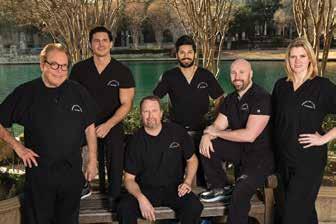
S er ving adults and children with c linics in: S herman, TX 903.309.1410 McKinney, TX 972.217.7864 P lano, TX 972.295.9661 Mesquite, TX 972.318.9048 Frisco, TX 214.473.5877 Celina, TX 972.346.1993 Dallas, TX 214.504.3923 Allen, TX 469.208.3777 It
’s essential to take care of your feet !

EPAT Therapy Accelerate the healing process.
Courtesy Premier Foot & Ankle
Extracorporeal Pulse Activation Treatment (EPAT®) also known as Shock Wave Therapy, is the most advanced and highly effective noninvasive treatment method approved by the FDA. This proprietary technology is based on a unique set of pressure waves that stimulate the metabolism, enhance blood circulation and accelerate the healing process. Damaged tissue gradually regenerates and eventually heals. This non-invasive, in-office, clinic-based procedure represents a breakthrough treatment option for a broad range of musculoskeletal conditions.
What disorders can be treated with EPAT?
Generally, acute or chronic muscle pain and/or tendon pain in neck, shoulder, elbow, back, foot and ankle. The most common conditions treated in the foot and ankle are plantar fasciitis (heel and/or arch pain), Achilles tendonitis, and other tendon/muscle pain.
What are possible side effects or complications?
The non-invasive EPAT treatment has virtually no risks or side effects. In some cases, patients may experience some minor discomfort which may continue for a few days. It is normal to have some residual pain after intense exercise or a full day of work.
What are the expected results?
The beneficial effects of EPAT are often experienced after only 3 treatments. Some patients report immediate pain relief after the treatment, although it can take up to four weeks for pain relief to begin. The procedure eliminates pain and restores full mobility, thus improving your quality of life. Most patients treated report to be pain-free and/or have significant pain reduction.
Is EPAT safe?
Yes. This FDA approved technology was developed in Europe and is currently used around the globe. A wealth of medical experience, state-of-the-art engineering, and optimal quality have been built into each EPAT device, and extensive clinical studies and test have confirmed its safety and efficacy. If performed by a qualified caregiver EPAT has virtually no risks or side effects.
How is the treatment performed and how many will I need?
Coupling gel is applied to the treatment area of interest
to enhance effectiveness. After these preparations, EPAT pressure waves are released via the applicator moved over the area of interest in a circular motion. The sessions take approximately 5 minutes depending on the disorder to be treated. Generally, 3-5 treatment sessions are necessary at weekly intervals. You will receive post-treatment instructions from your Podiatrist to follow during your recovery.
Why should I consider non-invasive EPAT?
EPAT has a proven success rate that is equal to or greater than that of traditional treatment methods (including surgery) and without the risks, complications and lengthy recovery time. EPAT is performed in your Podiatrist’s office/clinic, does not require anesthesia, requires a minimal amount of time, patients can bear weight (i.e. walk) immediately, and return to normal activity on the day of the treatment.
Some benefits of non-invasive EPAT:
• Patients are immediately fully weight bearing.
• Bilateral patients can be treated at the same time.
• No incision – No risk of infection at the treatment site –No scar tissue formation.
• Patients are able to return to work/normal activities the same day of the procedure.
• Patients evaluated for success at 12 weeks.
• Non-invasive so biomechanics are not affected – future treatment options are not limited.
• Cost Effective
• Reduced conservative care – ends the cycle – Reduced after care and complications costs.
• Reduced cost from lost work.
• Fast, safe and effective.
How much does EPAT cost?
In the past, procedures similar to the EPAT costs thousands of dollars when performed in the operating room due facility requirements (size of the machine) and the need for an anesthesiologist. Today, this technology is available at a fraction of this cost and can be performed in office without the need for local or general anesthesia. Dr. Korpinen’s staff can provide a personalized pricing program. Some patients can use their “Flexible Payment Medical Savings Account” to cover the out of pocket expenses with pretax dollars.
19 TEXOMA AREA Living Well Magazine | JULY/AUGUST 2020

When you need top quality parts and service, look to Plano Power Equipment. To keep your equipment in top shape, you can count on Plano Power Equipment’s retail parts sales and servicing of Toro-brand equipment using genuine Toro® parts.

POWERFUL PERFORMANCE AND LIGHTWEIGHT AGILITY!
21” Personal Pace® Honda Engine Super Recycler® Mower (20382)
• Personal Pace® self-propel automatically adjusts to your walk speed.
• Powered with a Honda® GCV 160cc OHC engine.
• Covered by a 5-Year Guarantee-to-Start engine warranty plus a 5-Year Full Coverage Warranty.
• Quick Stow Storage Handle allows you to store your mower in tight spaces.
30” Personal Pace® TimeMaster® Mower (21199)
• Time Saver – Finish jobs faster with the 30” deck.
• No Restarts! Leave the mower without restarts with Spin-Stop™ Blade Stop. Pick Your Pace–You control the mowing speed with Personal Pace®.
• Big Power – You’ll enjoy great power and performance from 10.00 ft.-lb. Gross Torque Briggs & Stratton® 223cc OHV engine.

MOW LIKE THE PROS! EXPERIENCE THE RESIDENTIAL ZERO-TURN RIDING MOWER WITH COMMERCIAL MOWER FEATURES.
50” TimeCutter® MX5000 (74773)

• Mow around obstacles easily with zero-turn radius steering and dependable dual hydrostatus transmissions.
• Enjoy a smoother ride with Toro’s long-lasting durable, heavy-duty 10-guage steel frame, commercial style front axle and heavy-duty front caster forks with wide front tires.
• Pro Performance 24 HP Kohler V-Twin 725cc engine with Pro-Series air cleaner.
• 50” heavy-duty fabricated deck featuring Toro’s tough IronForged™ cutting system that dominates challenging cutting conditions – 3-bladed mowing system and durable 6” commercial inspired spindles, driven by belts made of Kevlar®, the same material found in bullet proof vests.

Plano Power Equipment www.planopower.com
GET THE JOB DONE FASTER AND START YOUR WEEKEND!
1414 N. Central Expy. Plano, TX 75074
(972) 423-5220

2027 Texoma Parkway • Sherman, TX 75090 • 903-893-6682 • www.justondobbs.com Wells Fargo Advisors is a trade name used by Wells Fargo Clearing Services, LLC, Member SIPC. CAR #0320-04034 The use of the CDFA® designation does not permit Wells Fargo Advisors or its Financial Advisors to provide legal advice, nor is it meant to imply that the firm or its associates are acting as experts in this field. Wells Fargo Advisors is not a legal or tax advisor. Investment and Insurance Products: NOT FDIC-Insured/NO Bank Guarantee/MAY Lose Value Working with you now and over time to pursue your investment goals Juston J. Dobbs, MBA, CDFA®, CFP® Managing Director - Investments Clients. Community. Commitment.
“You may find that your 2nd or 3rd opinion should have been your first.”

DENNIS BIRENBAUM, MD EUGENE J. WYSZYNSKI, DO
Dr. Birenbaum founded the Arlington Cancer Treatment Center in 1981 He founded the Texas Hematology Center, PA in 1997 He is the founder, Medical Director, and CEO of Patients Comprehensive Cancer Center (2001) & McKinney Regional Cancer Center (2007). Dr. Birenbaum trained at The University of Texas M.D. Anderson Cancer Institute for 5 years, 3 years as a Hematology/Oncology fellow and 2 years as facility professor. His private practice in Hematology/ Oncology has been in the Dallas/Fort Worth area since 1979.
AREAS OF CLINICAL INTEREST:
• Gastrointestinal Tumors
• Melanoma, Sarcoma
•Breast Cancer
•Lymphoma
CREDENTIALED AT SEVERAL LOCAL HOSPITALS:
• Centennial Medical Center
• Medical Center of McKinney
• Methodist Richardson Medical Center
• Dallas Medical Center
• Specialty Hospital
•Kindred Hospital
PERSONAL INTERESTS:
•Born and raised in Dallas, TX
• Attended SMU (Southern Methodist University)
•Father of 2 sons
• Owns six dogs
• Loves traveling and golf
• Avid collector of arts and antiques
Dennis Birenbaum, MD and Dr. Wyszynski, MD, DO are M.D. Anderson trained hematologists/oncologists.
Dr. Wyszynski, MD, DO also trained at Fox Chase Cancer Center in Philadelphia, PA.
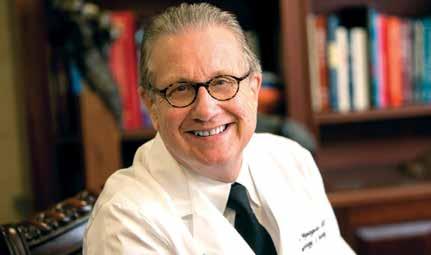
Dr. Wyszynski joins the Texas Hematology and Oncology Centers after many years of successful private medical practice in the Dallas/Fort Worth area. Dr. Wyszynski completed his internship and residency at John F. Kennedy Memorial Hospital in Stanford, New Jersey. He followed these with a number of Fellowships including one in Hematology/Oncology at the prestigious M.D. Anderson Cancer Center in Houston, TX, and two years at Fox Chase Cancer Center in Philadelphia, PA. Dr. Wysznski is well known for his quality of care and the personal interest he takes in his patients. He is very active in many professional societies and investigative trials.
BOARD CERTIFICATIONS:
• American Osteopathic Board of Internal Medicine: Hematology/ Oncology-Certified: 8/24/2007
• American Osteopathic Board of Internal Medicine
PROFESSIONAL SOCIETIES:
• American Osteopathic Association
• ASCO
•Texas Medical Association
•Dallas County Medical Association
CLINICAL CANCER INVESTIGATIVE TRIALS:
•Central Pennsylvania Oncology Group Protocal
•Eastern Cooperative Group
• Southwest Oncology Group
PERSONAL INTERESTS:
•Married and father of 2 children
• Enjoys traveling and spending time with family
• Active in many hobbies






23 TEXOMA AREA Living Well Magazine | JULY/AUGUST 2020 Take care of your family. We’ll take care of everything else. 302 S. Walnut Street • Sherman, TX 75090 • 903.893.1171 • www.dannelfuneralhome.com Dannel Funeral Home is owned by Charles Dannel, fifth generation exemplifying leadership and community service. “Look for the helpers. You will always find people who are helping.” - Fred Rogers Thank you.
By Sondra Barr
BUILT TO LAST Tom Selleck still commands an audience.
Tom Selleck is no one-hit wonder. His enduring and much beloved leading man presence on television screens has spanned over four decades.
Larger-than-life, the 6 foot 4 star strikes a commanding, no-nonsense presence. Mix that with a rancher’s work ethic, more than a dash of old school charm, and a rugged visage that only gets better with age, and you have the key to Selleck’s lasting appeal.
It’s this reliable everyman persona that permeates his two most enduring starring roles, most recently as Frank Reagan, the New York police commissioner in the long-running Blue Bloods, which wrapped up its 10th season in May, and in the 80s smash hit Magnum, P.I.
Perhaps it’s no surprise that both roles encompass a strong code of ethics, something that Selleck, 75, embraces in his private life. Rather than take his prolonged success for granted, he’s nurtured it at arm’s length, while prioritizing his family, their 65-acre California ranch, and the causes nearest his heart.
“I’m a fairly private person,” he told People Magazine’s Aili Nahas this year. “And I’ve always treasured the balance between work and time with my family. It’s always about them.”
When Magnum, P.I. went on-air on Dec. 11, 1980, Selleck was a relative unknown. He had gotten into acting while a student

and basketball player at the University of Southern California. After appearing in some commercials and on The Dating Game twice (surprisingly, he didn’t get the girl), 20th Century Fox tapped him for a $35-a-week paycheck in their selective “New Talent” program, according to Parade.
A short while later, the military called Selleck up for his Vietnam commitment. He didn’t balk and signed on for a six-year commitment. “I am a veteran, I am proud of it. I was a sergeant in the U.S. Army infantry, National Guard, Vietnam era,” he’s said. “We’re all brothers and sisters in that sense.”
When Selleck’s service came to an end, he returned to California ready to start where he left off. According to impactingourfuture.com, after six months of active duty, there was a uniform that Selleck kept in his car so he’d be ready to serve at a moment’s notice. “It wasn’t the best thing for acting, especially when you had to

24 TEXOMA AREA Living Well Magazine | JULY/AUGUST 2020

The luckiest thing that happened was that I didn’t get a real job until I was 35.

get a military haircut, and no one was wearing their hair that way. You looked a little geeky for most parts,” he recalled. Yet, parts he earned, in soaps, forgettable movies, and pilots that didn’t sell.
At 35, he found himself in Hawaii to take on yet another TV pilot, but this show was different. The day after Magnum, P.I. premiered, Selleck was a star. The private-eye series depicted Selleck as Thomas Magnum, a Vietnam vet working as a private investigator in Honolulu, who operated out of the sprawling estate of a famous author who was never home. Viewers couldn’t get enough of Selleck, the hot cars, stunning women, and luxe Hawaiian setting.
“The key to Magnum was that he woke up one day at 33 and realized Continued, page 26
25 TEXOMA AREA Living Well Magazine | JULY/AUGUST 2020
Continued, from page 25
he had never been 23,” said Selleck to writer Mary McNamara for the Los Angeles Times in 2011.
What appeared to many like overnight success for Selleck was a long time in the making. “The luckiest thing that happened was that I didn’t get a real job until I was 35,” said Selleck to AARP in 2015. During the years of ho hum roles, he sought out acting classes to hone his craft.

“When I was 25, I looked 35 but sounded 15. There are a lot of very good actors who make it as younger leading men but don’t graduate––because the audience won’t accept them as grown up.”
Accept Selleck as a grown up, the public did. At the peak of his Magnum popularity, Selleck was earning well over $1 million annually, an astronomical sum in the 80s. Meanwhile, he made Oahu the destination du jour of that decade.
According to a 1985 Chicago Tribune article by Ron Miller, “One can’t land on Oahu without knowing that this is Tom Selleck’s island. He grins from posters everywhere––in the airport souvenir shops, in the booths at fast-food joints, on the sides of hot-dog stands. The tourist brochures given away in boxes along Waikiki Beach rank him up there with King Kamehameha.”
At the height of the show’s popularity and his fame, Selleck abruptly stepped away from the spotlight and retreated to his ranch in Hidden Valley, California, with his wife and daughter. He wanted a quieter life away from the prying eyes of the media and obsessive fans.
“I knew intellectually what it would mean in terms of being a public person, but until you’ve lived it, there’s no way to understand it. I had a feeling of, ‘I don’t think I’m cut out for this,’” he said.

ABOVE: Selleck is best known as portraying Hawaiibased private investigator Thomas Magnum on the 1980’s television show Magnum, P.I.
According to the People interview, Selleck’s self-imposed hiatus from Hollywood was extended by the disappointing scripts that would come his way. “I put up with the articles that said, ‘he’s disappeared, he’s done.’ And you do get done, I’m well aware of that. It was a big lull, but it put a lot of things in perspective.”
Tom Selleck Quick Takes
• He auditioned with Steven Spielberg and George Lucas for the lead in Indiana Jones
• He had a hip replacement in 2013. To recover, he built a bridge on his ranch as an unconventional form of physical therapy
• He sometimes gets saluted by real NYPD officers when walking down the street
• He’s a veteran of the California Army National Guard
• One of his earliest roles was on The Young and the Restless
• He earned an Emmy nomination for his role on Friends
He spent the ensuing time tending to his ranch and horses, while he and his wife raised their daughter, Hannah.
His wife, actress Jillie Mack, whom he’d met in 1984 after spying her backstage after her performance in Andrew Lloyd Webber’s musical Cats, initially wasn’t keen on moving the family to a ranch. But, according the 2015 AARP article, she views it differently in hindsight.
“It’s the best place to raise a child,” she said. “It was such the wisdom of Tom. He knew he needed to buy back his anonymity, to replenish the soul.”
The wide open spaces also helped to strengthen the pair’s happy union, which is 33 years strong. “There’s a lot of yin and yang in us. I’m kind of quiet. She’s got this joie de vivre. I don’t know what our secret is, but I’m happy,” he said. After recharging his star wattage, Selleck was back for more success. He starred in the 1987 movie 3 Men and a Baby and its sequel, 3 Men and a
26 TEXOMA AREA Living Well Magazine | JULY/AUGUST 2020


Little Lady. He also had a recurring role as Courteney Cox’s older love interest on Friends and he’s also starred in the popular Jesse Stone series television movies.


Yet, it’s his character in Blue Bloods that has provided Selleck another act to his lengthly career. The role of Police Commissioner Frank Reagan is tailor made for Selleck’s unique brand of no nonsense reliability. Reagan is a man who commands respect at both City Hall and the Sunday night dinner table, where he anchors a three-generation NYPD family, according to Parade. The show premiered in 2010 and has consistently drawn in over 11 million viewers per episode. It was recently announced the show will be back for the 2020/2021 season.
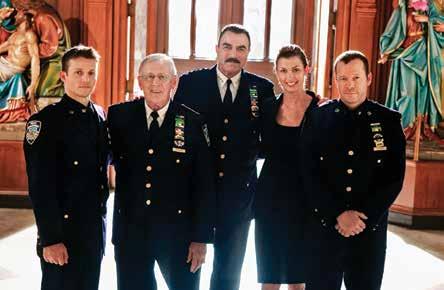
“The show has lasted because the characters have been allowed to grow and change. The potential is limitless in my opinion,” he told TV Insider. “Everybody’s very much aware that this is maybe a once in a lifetime opportunity––a show that’s found its way and is welcomed by an audience. I’m ready to go back when it’s okay to start again.” While we can’t wait for Selleck to be back, he’s been quarantining with his wife on their ranch. A place that he’s said works magic on his body and mind. “This ranch is a great counterpoint to the acting business, which is an abstraction,” he told AARP. “You do something, it’s up on a piece of film, and everybody argues whether it is good or bad. You dig a hole and plant an oak tree––and I’ve probably planted a thousand of them––it’s real. It’s there and you can watch it grow. It’s a lot different than being famous, and it keeps me sane.”
27 TEXOMA AREA Living Well Magazine | JULY/AUGUST 2020
In Quigley Down Under (1990), Selleck portrays a sharpshooter hired by an Australian rancher at a very high price but when Quigley arrives Down Under, all is not as it seems.
CBS CBS
Blue Bloods just wrapped up its tenth season but the popular show shows no signs of slowing down.
MGM
Selleck and wife Jillie Mack at the Carol Burnett 50th Anniversary Special.
Radiofrequency ablation treatment now available for spinal tumors
Minimally invasive technology, close to home

A treatment system specifically used for treating painful tumors that have spread to the spine from cancer in other parts of the body is now available at TMC. Orthopedic Spine Surgeon at Texoma Medical Center, Brian Rose, MD, FAAOS, says he has been treating patients for about two years.
The treatment serves a dual purpose. Dr. Rose states, “Radiofrequency ablation enables us to treat tumors using a small incision. Once the tumor is destroyed, we strengthen and stabilize the spine by filling in the affected areas with a cement-like material. The procedure usually takes less than one hour and following a short time in recovery, patients can go home.”
Dr. Rose says that the person ’ s pain level is greatly reduced. For older patients with other health conditions, the minimal side effects are a plus. This often allows the patient to proceed with radiation therapy and/or chemotherapy without severe pain
Enhancing treatment options for patients
The new treatment is an extension of kyphoplasty, a procedure already performed at Texoma Medical Center for patients with spinal pain due to compression fractures that result from osteoporosis. “Kyphoplasty is a very similar procedure. The difference is that no ablation is needed The patient’s vertebrae need support, so we fill any fractures or pock
cementlike substance, and patients can get
“Many patients who previously rated their pain as a ‘10’
these solutions. We are trained to be as minimally invasive as possible, which equates to minimized pain and quicker recovery for the patient. These two procedures fall right in line with that ”
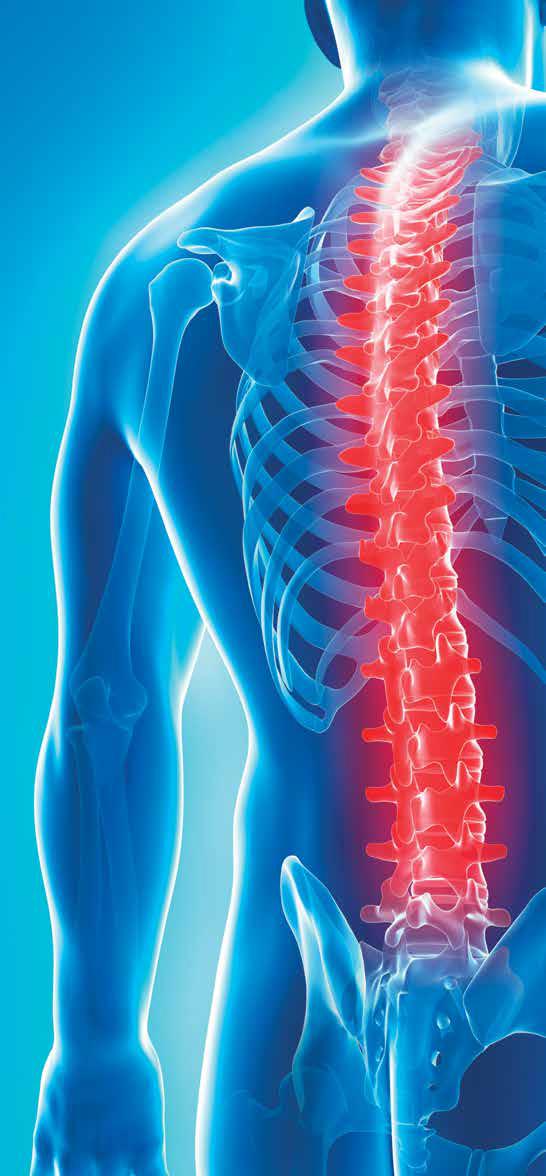
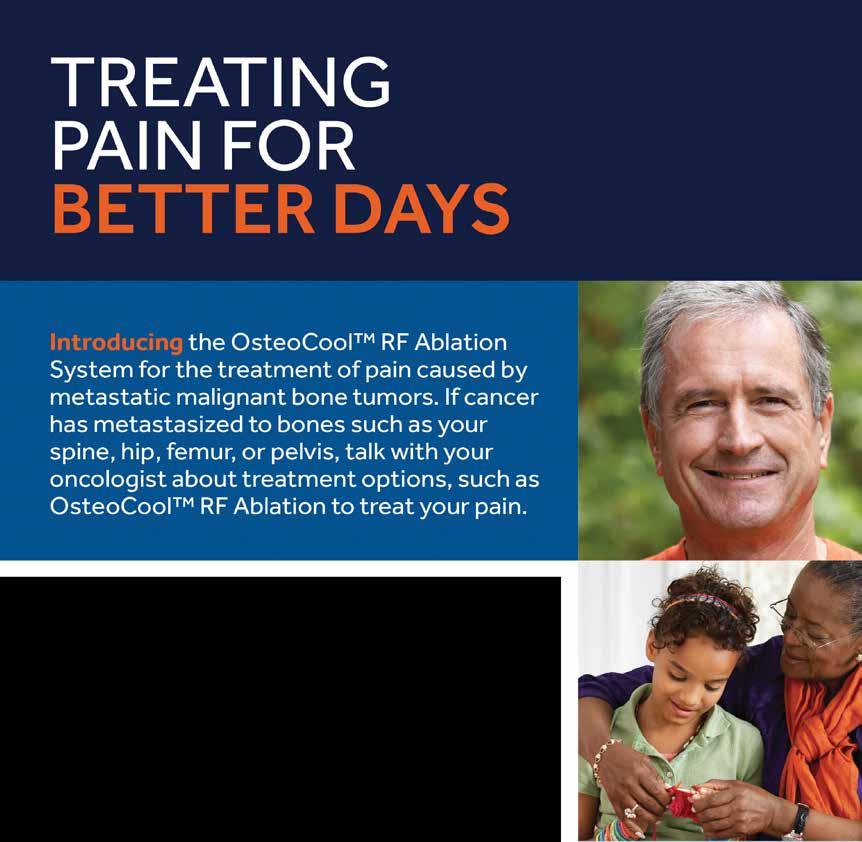
ets
th
lief fairly quickly
r.
se.
us it dropped to a
■ Individual results may vary There are risks associated with any surgical procedure. Talk with your doctor about these risks to find out if minimally invasive surgery is right for you
FAAOS Orthopedic
rgeon Brian Rose, MD Texoma Orthopedic and Spine 903.465.2190
with
e
re
,” says D
Ro
tell
‘2’. It’s exciting to be able to offer
Brian Rose, MD,
& Spine Su

WHAT ARE THE RISKS?
Remember to always talk to your doctor abo u t the benefits, potential complications, and risks for any procedure. Damag e to surrounding tissue may occur from this procedure. Additionally, if you have a tumor in the cervical spine (neck) or have a heart pacemaker or other electro nic implant , this procedure may not be right for you. For more information, please visit Me dtr onic.com.
Physicans Offering OsteoCool RF Ablation:
Texoma Orthopedic and Spine - Denison, TX
Brian Rose, MD - (903) 465-2190
Paris Regional Medical Center - Paris, TX
J. Keith Preston, MD - (903) 737-9999


UC201701348a EN PMD018087-2.0 Medtronic Further.Together MICHELSON TECHNOLOGY AT WORK
EVOLVING IN A TIME OF CRISIS
By Julie Alvira, MD
WSolitude is the state of being alone without actually feeling alone, since we are our own company. In 2015, author Jane Porter described that when moments of solitude are chosen and appreciated, they result in great productivity and creative thinking.
Could it be that one of the positive messages of this whole crisis is that we may need to slow our pace and dedicate more time to ourselves? Or in the case of couples, to focus on our marital relationships? If we live with our children and/or relatives, maybe it means spending more quality time with them instead of the daily rush between jobs and schools.
hile it’s true that practicing solitude is important and beneficial, before COVID-19 many people didn’t fully grasp or understand the concept of solitude. The recent pandemic forced people to become familiar with it quite abruptly.

Solitude is a positive state and feeling lonely is a negative state. What has happened during the pandemic is that in addition to forcing us to work alone, it’s also imposed social isolation. This isolation goes against human nature and our need for social connection. Social adaptations are part of our daily lives and are central to making us the most successful species on the planet.
What happens when all the “normal” interactions involved in the minutiae of regular day-to-day living suddenly disappears? It’s a shock. Thanks to the concept of neuroplasticity, our brains have the ability to activate new neural channels and learn new habits. For many, isolation and solitude have brought both positive and negative aspects.
Let’s see …
Many people in early recovery from addictions such as alcohol and other substances have not been exposed to parties and other social stimulants. At the same time, they find it difficult to be with themselves because they have to work on their mental health twice as much, without the daily connection of in-person meetings. At the same time they have been learning to connect virtually.
For many, the virtual connection through Zoom, Blue Jeans, etc., online platforms intended for conferences and work situations have become an important form of connection, not only work but for personal use.
Many people are leaving their houses to walk down the street and see their neighbors, even from a distance, which they didn’t do before due to lack of time.
Many families are spending time playing board games, completing puzzles, and cooking with their children, or have created ways to cohabit under the same roof every day, all day.
Working men and women, as well as school and university students, have been learning to work or study “online” or remotely in the wake of the crisis, while learning to organize their space and time in the best possible way and create daily routines to feel comfortable with the new norm.
30 TEXOMA AREA Living Well Magazine | JULY/AUGUST 2020

It had become popular to do exercises at home and follow virtual routines or create them to stay physically and mentally fit.
Some people who wanted to lose weight have seen the benefit of focusing more on themselves and not forcing food restrictions but rather paying attention to the foods their bodies needs for fuel at that time. For others, it’s the opposite. Home isolation has resulted in panic and anxiety, with people using food as an escape by repeatedly consuming food high in sugars and flours to feel better, which usually results in gain weight.
Couples have learned to be together all day when they used to only spend time together in the morning and after

work. For many this has been of great benefit and solidified connection. Others have found it difficult to be with their partner every day, all day, resulting in many to feel they don’t have space to breathe.
Many medical colleagues and nurses leave their families and expose themselves to face an unknown entity and perhaps get sick to save others. They don’t have the privilege of staying home and practicing new positive habits of solitude and isolation.
Before thinking about the negatives of staying at home, let’s look at everything from another angle. In what way will I evolve with this crisis?
Julie Alvira, MD, MBA Healthcare Management, is the founder of Coach Dr. Julie, LLC – Physician Life and Weight Loss Coaching Services. You can find her on Facebook as Coach Dr. Julie or via email at julie@coachdrjulie.com. www.coachdrjulie.com
31 TEXOMA AREA Living Well Magazine | JULY/AUGUST 2020
Dentistry: which patient type are you? What you should know before going to the dentist.
“Been going there for several years, they are all great folks. They are concerned about your pain level. Some of the newest equipment available. You are not rushed through as a herd animal; they take the time to visit with you and listen to all your concerns about your treatment. All in all, a great place to get the smile you want.”
~W. Weaver

•People who want to keep their teeth healthy for a lifetime
People who don’t have problems with their teeth don’t mind going to the dentist regularly because they want to prevent dental problems and they want to catch problems early if they do occur. They typically are seen 2-4 times a year for oral health checkups, whitening and night guard checkups. These patients want to stay on top of their dental care with regular oral health checkups.
•People who have one or two problems with their smile or may be in pain
These folks can be inconsistent with their oral health checkups. They may notice pain when drinking cold liquids, while eating certain foods or may be woken at night with tooth pain. They may not be certain even which tooth is causing the pain. Sometimes these folks are motivated by a life event to upgrade their smile; for example, a wedding or a class reunion. They may have a discoloration or a chipped tooth. They may be embarrassed about their appearance or about their bad breath.
•People whose teeth are falling out and may have a family history of wearing dentures
There are people who may feel that some of their teeth are loose or falling out or their teeth are hopeless. They usually don’t go to the dentist at all because they are afraid of what the dentist might say, they may be worried about how painful the visit might be or may be concerned for financial reasons. They may have had a traumatic dental experience in their past. They are usually embarrassed by their smile or their bad breath. These folks may think they are too old to have a beautiful smile and a pain free mouth. Their parents or grandparents have worn dentures for many years, so they think that is normal. Our smile is what most people see first. A smile is a strong communication tool. When people don’t smile, others think they are grumpy or unfriendly. Most people avoid engaging in conversation with someone who has bad breath.
•People who already wear dentures
Folks who already have dentures have already dealt with multiple dental problems in their lifetime. Sometimes they say that bad teeth run in the family. They may have had a bad experience and spent lots of money on their teeth with poor results. People who get dentures may feel that once their teeth are out and the denture is placed that all their dental problems go away. These folks assume they will no longer have the need to see the dentist. Most denture wearers have a problem with their lower denture not staying in place, becoming loose and causing problems while eating or talking. They may not be able to eat the foods they enjoy, or their physician recommends. The older we get the more important it is to be able to chew the foods we want and need. Denture wearers can lose 60%-80% of their chewing function. Also, without the assumed need to go to the dentist these people miss out on much needed oral cancer screenings and they may be unaware of the advances in dental technology for denture wearers. They may have been told in the past they were not candidates for implants but with all the new advances in dentistry, they may be candidates for dental implants. The newest dental technologies include bone building materials, dentures for the upper arch that do not cover the palate, and implants that lock a prosthesis to their jaw. Patients are never too old for implants.
1005 E. Sara Swamy Sherman, TX 75090 903-868-9850 drsamcan.com
Call the office to arrange a consultation today at 903-868-9850.
Sam J. Nechamkin, DDS, MS
What Premier Dentistry is known for:
Beautiful Smiles—we believe that a beautiful smile brings great confidence. You are never too old to have a beautiful smile.
Placing Implants—we enjoy providing dental implants for patients who have been suffering with a missing tooth or teeth. Patients love the way a dental implant looks and feels. Our patients like not having to be referred to another office to complete their treatment.
Sedation—for patients who fear the dentist or dental work, conscious sedation is the best option for them. We offer nitrous oxide, oral conscious sedation, and I.V. sedation and our office also has hospital privileges if needed.
Procedures—free consults, exams, dental 2-D & 3-D Cat Scan radiology, oral health checkups, gum treatments, fluoride, sealants, tooth colored fillings, same day crowns, bridges, simple & surgical extractions, bone grafting, gum grafts, sinus lifts, removable partial dentures, frenectomies, tongue tie release, smile lift, veneers, orthodontics, night guard therapy, snore guard appliances, sleep apnea appliances, single tooth implants, multiple tooth implants, dental implants for Snap-On prosthesis and fixed dental prosthesis.
Painless injections—the most important thing to our patients is to not get hurt, our injections are nearly painless because we use a strong topical agent first and secret injection technique to keep the injection pain to a minimum, most of our patients say they don’t even feel the injection.
Our doctors—each of our dentists have a minimum of 25 years’ experience and thousands of continuing education hours, Dr. Nechamkin is a board-certified specialist in Periodontics and dental implants, we have two awesome dental hygienists with many years’ experience cleaning teeth and treating gum disease.
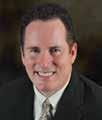

Dr. Sam J. Nechamkin (Dr. Sam) earned his doctorate degree at Baylor College of Dentistry and completed his Periodontics and Dental Implants specialty training at The University of Oklahoma Health Sciences Center. Dr. Sam practices all fields of general dentistry and is a boardcertified specialist in the field of periodontics,(foundation of teeth). He has received extensive training in dental implants and sedation dentistry.
Dr. Sam has been distinguished as a Diplomate of the American Board of Periodontology. A Diplomate “is a periodontist who has made significant achievements beyond the mandatory educational requirements of the specialty. “ Less than 35% of periodontists in the world hold the Diplomate status; Dr. Sam is the only Sherman dentist distinguished as a Diplomate in Periodontology.
Scott D. Schwalm, DDS
Dr. Schwalm attended Illinois Wesleyan University for a BA in Biology and continued his education at the University of Washington School of Dentistry. Prior to moving to North Texas, Dr. Schwalm had an extremely successful and state-of-theart private practice in Bellevue, WA for 14 years.


Dr. Schwalm brings experience and his consistent pursuit of excellence for a wide variety of procedures. He loves the ability to take care of his patients from start to finish in the comfort of one office. When needed, he is also a stellar quarterback coordinating specialists and follow-up care, all in the interest of his patients.
Recently Scott, and wife Dawna, collaborated with shark biologists at Guadalupe Island, Mexico studying mega great whites who frequent the island each year. They plan on travelling back this year to continue the work to understand these amazing creatures.
D. Shane Edwards, DDS


Dr. Edwards received his Bachelor of Science for Abilene Christian University. He continued his education at the Baylor College of Dentistry in Dallas graduating in 1995. Dentistry is Dr. Edward’s passion. His philosophy on dentistry encompasses comprehensive restorative care, including conscious sedation, aesthetics, dental implants, Fast Braces and the treatment of bruxism. He whole heartedly believes in staying abreast of advances in dentistry and is continually advancing his skills.
Dr. Edwards is dedicated to healthy beautiful smiles. He believes that the practice of dentistry is relationship based and patient driven. This enables him to provide comprehensive, interdisciplinary care to his patients. “I am committed to providing the highest quality of dental care available in an ethical and caring environment. I am dedicated to continual advancement of my knowledge and skills; I strive to deliver to each patient the type of care that I would accept for my own family.”
33 TEXOMA AREA Living Well Magazine | JULY/AUGUST 2020
LOSS IN A TIME OF COMMUNITY CRISIS
By Nancy Jackson
How does it feel to be away from your loved ones? For many families, inconvenient. But, they learned to use social media and Zoom to stay connected. They celebrated holidays, birthdays and graduations in unique ways.
But what if you couldn’t see your loved ones, what if they were ill and had to have treatment without you? What if they were restricted in their rooms at hospitals, nursing homes and senior living centers, where you could not see or touch them? And even worse, what if they died without you being there and you couldn’t have a funeral?
Oh my, how do you cope now with the grief, the guilt, the shock and the lack of closure? For so many today, that is a pressing reality––their loved one is now gone and they didn’t have the opportunity to say goodbye. Learning how to mourn and express your grief without closure moments such as being there at the death, a funeral or a family gathering can make you feel like you don’t know where to go. Your grief is an expression of your love and the best ways to cope include finding a way to share it with ours.
For many it begins with some type of ceremony, whether that is now at home with close family or holding a
funeral or graveside service when it is safe to have a larger gathering. You can participate in support groups, journal, share with trusted friends and even find creative outlets to express your feelings. If guilt is an on-going issue, then consider seeking professional support.
Find an activity that was special that you shared with your loved one, like riding through the countryside on Sunday afternoon. One of the ways that I connect to my father is by playing a round of golf, he loved to play and it lifts my spirits to “play” with him. Each of us is unique, take the time to find your closure as you begin mourning.

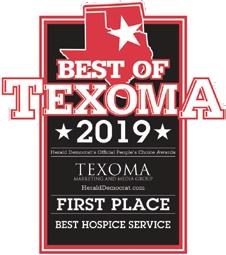
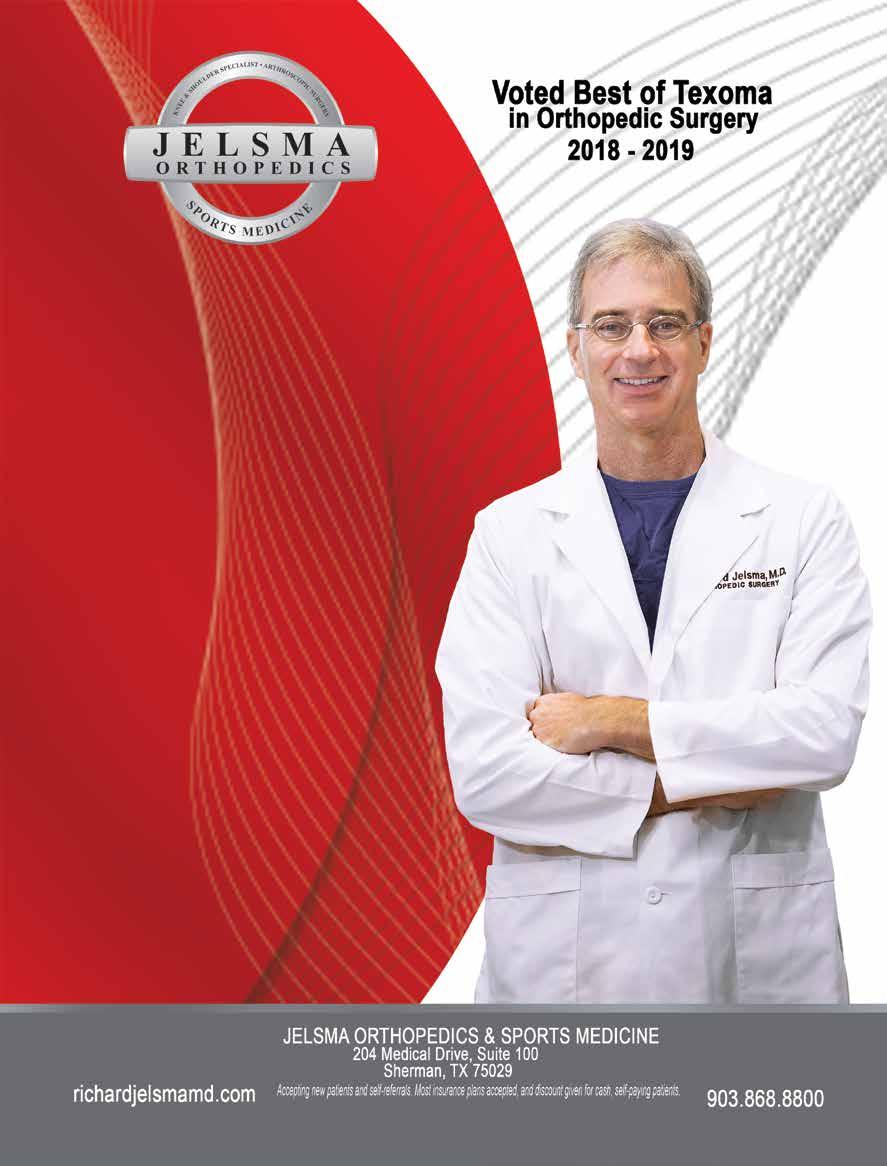
34 TEXOMA AREA Living Well Magazine | JULY/AUGUST 2020
Hospice Care Palliative Supportive Care Grief and Loss Programs Emotional and Spiritual Support A 501(c)(3) non-pro t community-based organization since 1982 505 W. Center St. Sherman, TX 75090 903-868-9315 Home Hospice Grayson, Cooke and Fannin Counties 316 S. Chestnut Gainesville, TX 76240 940-665-9891 www.HomeHospice.org
Should you have any questions or are in need of support, call Home Hospice at 903-868-9315.

Dr. Richard Jelsma is double board-certified by the American Board of Orthopedic Surgery in Orthopedic Surgery and Sports Medicine.
HIGH QUALITY SURGERY DEMANDS EXPERIENCE
Dr. Jelsma is one of the most experienced surgeons in North Texas having performed:
•Over 3,000 minimally invasive arthroscopic shoulder repairs. Including rotator cuff and labral tears.
•Over 3,000 arthroscopic knee surgeries. Including ACL tears, meniscus tears, and cartilage injuries.
•Over 1,000 minimally invasive knee replacements.
DR. JELSMA’S OFFICE PHILOSOPHY: PERSONAL CARE
He prides himself on seeing all of his patients personally. Each patient is examined, and additional tests may be ordered to determine an accurate diagnosis. Dr. Jelsma then reviews a list of treatment options with the patient in order to make a decision while taking into account their personal goals and lifestyle considerations.
ASSISTING ALL PATIENTS WITH THEIR GENERAL ORTHOPEDIC NEEDS
•Treats all types of musculoskeletal pain, whether you’re an athlete or spectator.
•Addresses both non-surgical and surgical options.
•Dr. Jelsma and his team are here to get you back in life’s game.

Sta ed by 2 Licensed, Doctors of Audiology
Hearing Aid Fittings, Maintenance and Repairs
Wireless/Connectivity Hearing Solutions
• Invisible Fittings/Open Fittings
Evaluation Period On All Hearing Aids
Hearing Evaluations For All Ages
Battery Purchase Programs
Custom Ear Protection
Assistive Devices
30 Years of Experience
“Hearing Services of Mckinney is my #1 place to go for my hearing loss needs. Caring and dedicated professionals with many years of experience working daily to meet your needs” . – Terry G. Box, Retired Collin County Sheri
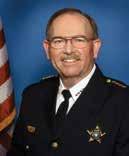


Other times available by appointment BETTER HEARING EEPS YOU CONNECTED!
Financing Options Available Locally Owned and Operated hearinmckinney.com 972.838.1300 4201 Medical Center Dr, Suite 270 Across from Medical Center of McKinney HEARING SERVICES OF McKINNEY Mon-Fri: 8:30am- 5:00pm LIZ BRASSINE, Au. D. DOCTOROFAUDIOLOGY
 By Elizabeth Brassine, Au.D.
By Elizabeth Brassine, Au.D.
Hearing Facts
Let’s start with some facts (NIDCD, 2013): one in five Americans 12 and older experiences hearing loss severe enough to hinder communication. Nearly 50% of adults ages 75 and older have hearing impairments. Hearing loss is the third most prevalent chronic condition in older Americans after hypertension and arthritis. About 26 million Americans between the ages of 20 and 69 have high frequency hearing loss due to exposure to loud noises at work or in leisure activities. Tinnitus (“ringing in the ears”) affects up to 50 million Americans. Tinnitus is currently the number one service-connected disability for veterans from all service. If you have hearing loss, you’re not alone. In fact, the World Health Organization estimates that 360 million people worldwide have “disabling hearing loss.”
How Hearing Works
When we become aware of a sound in our environment, it is the result of a sequence of events. The outer ear-sound travels through the pinna, what we see on the side of our head, which collects and funnels sound into and down the ear canal, striking the eardrum and causing it to vibrate. The middle ear-vibrations from the eardrum cause the ossicles (the three smallest bones in the body) to vibrate which, in turn, send the information onto the inner ear. In the inner ear, the movement of the hair cells sends electrical impulses through the auditory nerve to the hearing center of the brain, which translates them to sounds the brain can recognize.
Causes of Hearing Loss
Something can go wrong along that whole auditory pathway, therefore many things can cause our hearing system to stop functioning properly. The main causes are the aging process, noise exposure, infections, a variety of diseases such as Meningitis, injuries to the head or ear, birth defects, genetics, and ototoxic reaction to drugs or cancer treatment (i.e. certain antibiotics, chemotherapy, etc.).
How Hearing Loss Occurs
To understand why hearing loss is pervasive, it’s important to understand how hearing loss happens. Hearing loss happens when any part of our delicate hearing system stops working properly, whether it’s due to damage or deterioration. The most susceptible and common parts to break
UNDERSTANDING HEARING LOSS
down are the microscopic stereocilia, the thousands of tiny hair cells that detect and send sound impulses to the brain. When these tiny hair cells become injured, diseased or die naturally, the result is sensory hearing loss. This is by far the most common type of hearing loss. When the microscopic stereocilia (hair cells) in your cochlear (inner ear) are damaged, they will not send complete signals to your brain, causing you to be unable to understand the consonants (more typical than vowels) within words. For example, the word “TOOTHBRUSH” may sound like “OOBRU.” Healthy hair cells stand erect and are able to accurately detect sound waves and send impulses to the brain to correctly identify the word spoken. Damaged hair cells are limp and will no longer stand erect. They are therefore unable to properly detect sounds waves or send the correct information to the brain to identify.
How Hearing Loss Can Impact Your Life
If you think you hearing loss is inconsequential, you should know that studies have linked untreated hearing loss to significant issues such as: diminished psychological and overall health, impaired memory and ability to learn new tasks, reduced alertness and increased risk to personal safety, avoidance or withdrawal from social situations, social rejection and loneliness, fatigue, tension, stress and depression, irritability, negativism and anger, reduced job performance and earning power (from Better Hearing Institute, 2013).
What Hearing Loss is Like
You can’t recreate a hearing loss simply by plugging your ears. A person with normal hearing can hear quiet, medium and loud sounds that vary from low pitch (bass) to high pitch (treble). But when you have hearing loss, you often lose the ability to hear higher pitched sounds first, such as certain consonants like T, K, S, F, SH and TH. Even though you still may be able to hear the stronger, lower pitch vowel sounds, this is why “I hear, but cannot understand” is a common complaint.
Help is Available
If you think you or someone you know has hearing loss, the next step is an easy one––confirm it by seeing an Audiologist. Just as every person is unique, every hearing loss and hearing need is unique too. Consult an Audiologist who is trained to inspect your ear canal, accurately measure your hearing loss, assess your unique needs and make a recommendation that takes all this personal information into account.
37 TEXOMA AREA Living Well Magazine | JULY/AUGUST 2020
Elizabeth Brassine is a doctor of audiology and owner of Hearing Services of McKinney.


1351 W. President George Bush Highway Richardson, Texas 75080



Recognized for our pursuit of excellence in providing quality care to our community, Eminent Medical Center is a distinguished leader in healthcare. www.eminentmedicalcenter.com (469) 910-8800 Find us on Facebook @EMC.TEXAS Eminent Medical Center is the premier treatment destination in the Dallas/ Fort Worth area with three operating suites and five private patient rooms. 24/7 Emergency Care | Pain Management | Sports Medicine | General Surgery | Orthopedic Surgery | Neurosurgery | Minimally Invasive Spine Surgery | Total Joint Surgery | Foot & Ankle Surgery | Hand Surgery | Gynecological Surgery | Plastic Surgery
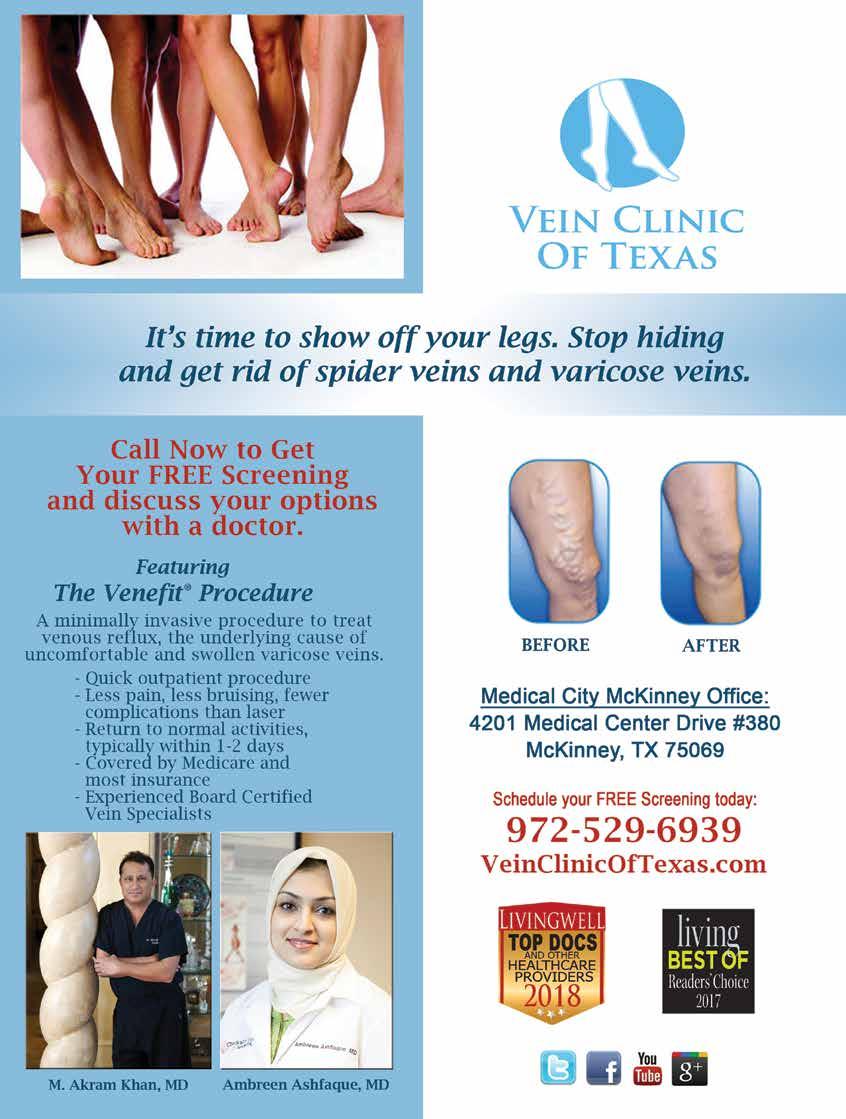

Excuse Me While I Burp
By Kimberly Blaker
One of the most common causes of excessive burping is taking too much air into your digestive system. The excess air must then be expelled. There are several possible causes of swallowing more air than your stomach can handle such as loose dentures, hiccups, eating or drinking too quickly, using a straw, smoking, chewing gum, and talking while eating.
Remedy: Pay attention to what you were doing before the burping started. Take notes to look for a pattern and see if decreasing the behavior resolves it. Also, consider going for a short walk after meals to help move the gas through your system.
Belching, or burping, is a bodily process that helps expel a build-up of gas from the digestive system. Some people view it as rude or embarrassing, while others find it amusing. Some even consider it a show of appreciation for good food or drink. Regardless of your personal take on burping, it’s a normal, healthy function, all of us do an average of three to six times after each meal. Still, if you find yourself burping excessively, it may cause you concern. A variety of causes of gas buildup can lead to the need to belch.
rises back toward the esophagus and causes heartburn. This leads to an increase in swallowing and the potential for air to be taken in. Over the counter medications are available to treat it, though some also cause burping.
cers may heal on their own with lifestyle changes like avoiding alcohol, controlling stress, eating a healthy diet, avoiding milk, and reducing the use of pain relievers. Some medications can treat ulcers or reduce stomach acid irritation.

Some foods cause a buildup of gas in your digestive system because of their high levels of starch, sugar, or fiber. Some common gas-inducing foods include beans, broccoli, cabbage, lentils, onions, dairy, peas, bananas, raisons and whole wheat bread. Carbonated drinks release carbon dioxide bubbles into your system and can increase belching. A side effect of some medications is burping as well.
Remedy: Keep a food diary to track everything you eat, along with the frequency and timing of your burps. You can see any patterns between foods then reduce or eliminate your consumption of gas-producing foods and drinks.
Because burping is the release of gas out of your mouth from your digestive system, digestive issues are often the cause. Some of the most common are: Acid Reflux or GERD: Stomach acid
Hiatal hernia: This type of hernia involves part of the upper stomach pushing through an opening in the diaphragm. Hiatal hernias are relatively common after the age of 50, most often causing no symptoms. Hence, people are unaware of the hernia. When the hernia causes burping, lifestyle changes, and medication usually resolve the symptom. Only rarely is surgery required for a hiatal hernia.
Lactose intolerance: This is an inability for the body to digest lactose in milk that results in bloating, diarrhea, and abdominal cramps, which lead to burping. Avoidance of dairy products is the easiest way to prevent symptoms.
Peptic ulcers: These are sores on the lining of the stomach, esophagus, and intestines caused by H. pylori bacteria (Helicobacter pylori) or irritation from pain relievers. The increase in acid that eats away at the lining can cause excess gas and belching. Ul -
Irritable bowel syndrome: Also known as IBS, this is a disorder affecting the large intestine resulting in digestive issues including gas and bloating that can lead to burping. IBS is a chronic condition and requires long term management of diet, lifestyle, stress, and possibly the use of medication.
Fructose malabsorption: This is when the body is unable to process foods or drinks containing fructose, leading to increased gas production or bloating. To resolve it, read labels and eliminate anything containing fructose from your diet.
Remedy: In these cases, burping is a symptom of a more significant problem. By addressing the underlying cause with medication or altering your diet under the guidance of a medical professional, you should experience a reduction in gas production.
When dealing with excessive belching, remember that generally, it’s temporary, harmless, and can quickly be dealt with by making minor changes in your lifestyle. But if an increase in belching continues for more than a couple weeks, is accompanied by other symptoms like severe abdominal pain, or affects your quality of life, contact your doctor. It’s best to make sure nothing more serious is going on with your body that’s causing your burping.
41 TEXOMA AREA Living Well Magazine | JULY/AUGUST 2020
Don’t Let Your Hip or Knee Slow You Down

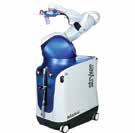


J. TYLER NEWTON, DO
Reconstructive Orthopedic Surgeon
Dr. J. Tyler Newton is a board-eligible, fellowship trained orthopaedic surgeon. Dr. Newton graduated from the University of Texas with a Bachelor of Science in Electrical Engineering and completed medical school at the University of North Texas Health Science Center where he was inducted into the honors society. Dr. Newton completed his orthopaedic surgery residency at St. John Providence Health System in metro Detroit and spent an additional year completing an orthopaedic hip and knee replacement fellowship at Cleveland Clinic in Florida.
Dr. J. Tyler Newton is a board-eligible, fellowship trained orthopaedic surgeon. Dr. Newton graduated from the University of Texas with a Bachelor of Science in Electrical Engineering and completed medical school at the University of North Texas Health Science Center where he was inducted into the honors society. Dr. Newton completed his orthopaedic surgery residency at St. John Providence Health System in metro Detroit and spent an additional year completing an orthopaedic hip and knee replacement fellowship at Cleveland Clinic in Florida.
During his fellowship, Dr. Newton gained invaluable experience utilizing the latest robotic technology to learn the most advanced practices in hip and knee replacements. Dr. Newton hopes to bring this state-of-the-art technology to his own practice soon.
During his fellowship, Dr. Newton gained invaluable experience utilizing the latest robotic technology to learn the most advanced practices in hip and knee replacements. Dr. Newton hopes to bring this state-of-the-art technology to his own practice soon.
In 2019, Dr. Newton joined the staff at Texoma Medical Center in the Denison. He is an active member of the American Academy of Orthopaedic Surgeons, American Osteopathic Academy of Orthopaedics, and the American Association of Hip and Knee Surgeons.
In 2019, Dr. Newton joined the staff at Texoma Medical Center in the Denison. He is an active member of the American Academy of Orthopaedic Surgeons, American Osteopathic Academy of Orthopaedics, and the American Association of Hip and Knee Surgeons.
Dr. Newton’s clinical interests include treatment of fractures and injuries, hip replacements (including direct anterior hip replacements), knee replacements (including partial and total knee replacements), as well as hip and knee replacement revisions.
Dr. Newton’s clinical interests include treatment of fractures and injuries, hip replacements (including direct anterior hip replacements), knee replacements (including partial and total knee replacements), as well as hip and knee replacement revisions.
5012 S. US Hwy. 75, Suite 285
Denison, TX 75020
5012 S. US Hwy. 75, Suite 285 Denison, TX 75020
416-6309
Don’t Let Your Hip or Knee Slow You Down J. TYLER NEWTON, DO
Orthopedic Surgeon TexomaCare Orthopedic Surgery (903) 416-6309
Reconstructive
TexomaCare Orthopedic Surgery (903)



43 TEXOMA AREA Living Well Magazine | JULY/AUGUST 2020 Mako “ Nice to meet you! I am a surgeoncontrolled robotic-arm for your total knee replacement.” You are unique and that is why you deserve a surgical plan that is tailored to your needs. Mako helps surgeons provide patients with a personalized surgical experience. I’m now in DFW and I’d love to meet you. Find a surgeon to see if Mako Technology is right for you. www.dfwmako.com Take control your knee pain
WOMEN AND ADD: THE HIDDEN DISABILITY
By Kimberly Blaker

According to Sari Solden, in her book Women with Attention Deficit Disorder, “Almost all women find that life today is complex, upsetting or frustrating, but they are still able to meet most of [life’s] demands reasonably well…. For women with untreated Attention Deficit Disorder (ADD), however, the demands of daily life can be crippling. It cripples their self-esteem, their families, their lives, their work and their relationships.”
ADD, also known as Attention-Deficit Hyperactivity Disorder (AD/HD), affects between three and five percent of the population. However, adult ADD, especially as it appears in women, often goes unrecognized.
CHARACTERISTICS OF ADD IN WOMEN
The symptoms of ADD are many. Some are more commonly seen in women and opposite the more recognized symptoms seen in men. This makes detection unlikely and diagnosis difficult. Each person’s experience with ADD is unique. While there is a multitude of characteristics, most women with the disorder don’t have every symptom. Instead, each woman has a mixture severe enough to impair some areas of life.
Mental vs. physical disorganization
Disorganization is typical and often a severe problem for women struggling with ADD. They may be unable to organize their homes, offices, or lives. To outsiders, the disorganization isn’t always visible. That’s because women who lead professional lives may have assistants, secretaries, and cleaning services to assist them. Some ADD women have a partner who compensates for their organizational dysfunction, as well.
Other women with ADD find clutter and disorganization an incredible distraction. These distractions, coupled with
the responsibilities of everyday life, lead to mental disorganization. The disorganized brain struggles to store, weed out, and organize logically. For these women, being tidy and organized equals survival.
Hyperactivity vs. hypoactivity
Women with ADD can be at either end of the spectrum, either hyperactive or hypoactive (underactive). Hyperactive women may go at full speed until they crash from the overload. Family life can also suffer from a hyperactive mother. She may be unable to sit and play games or read to her children unless she finds the activities stimulating. Many women with ADD are at the other extreme. They’re hypoactive, unable to muster the energy to do much of anything. These women are often unable to keep up with life’s many demands. Maintaining a home, participating in family activities, staying in touch with friends, even holding down a job can be a significant challenge.
Inattention vs. hyperfocusing
The problem is women with ADD struggle with the inability to regulate attention. So it doesn’t mean they can never maintain attention. Instead, their ability to focus is based on interest and whether the activity is stimulating. Many women daydreamed through school when they were younger. Yet the subjects or activities they found fun, interesting, or exciting didn’t pose such a problem. Adult life with ADD is often the same.
Hyperfocusing, which is the opposite of inattention, also poses problems and can coexist with symptoms of inattention. While it may be challenging to focus on some things, a woman may hyperfocus on that which interests her and be unable to shift her attention. Hyperfocusing can last for hours, days, and longer and makes it difficult to break for important matters. Meals may be forgotten, and family
44 TEXOMA AREA Living Well Magazine | JULY/AUGUST 2020

members can carry on conversations without being heard. So hyperfocusing puts a strain on the family. If a hyperfocused woman does manage to break away from what she’s engrossed in, she may wander aimlessly and forget what she’s doing.
Impatience and impulsivity
Standing in lines, sitting in waiting rooms, and being placed on hold for lengthy waits drives some women with ADD to the brink. So they may avoid these situations altogether. Women with ADD may be impatient either visibly or internally or act impulsively. Minor nuisances can cause significant agitation. Other women with this disorder can maintain their composure yet still feel anxious and annoyed.
Women with ADD may also be impatient about life and events. A woman may plan her whole education or entire life in one day and need for it to happen immediately. She goes into things full swing rather than step-by-step. As a result, women with ADD may have a change of heart after much investment of time or money or feeling spread too thin, with too many goals to achieve.
Impulsiveness is seen when women with this disorder act or speak without thinking. This often leads to trouble by spending impulsively or jumping into relationships and even marriage. Some struggle socially and interrupt conversations or blurt things out they later regret.
Mood
Mood swings, being overemotional, or easily frustrated is another problem. For some women, having ADD is like being on an emotional roller coaster. Extreme mood shifts sometimes lead to a misdiagnosis of bipolar disorder, though the two can coexist.
Women with ADD are frustrated by the slightest aggravations. A simple mistake seems a major ordeal and may result in anger, storming off, and dropping a task altogether. If interrupted in the midst of something, a woman may become irritable and annoyed.
in the ADD woman may stem from a lack of self-worth because she’s unable to hold down a job or adequately care for her family. It can also result from not achieving up to potential because of attention problems or the inability to stick with things. It also sometimes comes from feeling overwhelmed. This feeling can dominate the life of a woman with this disorder.
Continued, page 46

Depression, although not a symptom of ADD, often coexists or is a result of the debilitating disorder. Depression
45 TEXOMA AREA Living Well Magazine | JULY/AUGUST 2020
THE CAUSE OF ADD
Research indicates ADD is a neurobiological disorder with a strong genetic link. According to the nonprofit organization Children and Adults with Attention Deficit-Hyperactivity Disorder (CHADD), complications during pregnancy, labor, and delivery, exposure to nicotine or alcohol during fetal development, or several other environmental factors may also play a role in the development of ADD.
MISDIAGNOSIS
Studies show the incidence of ADD in men and women is nearly identical, says Kathleen Nadeau, Ph.D., co-author of Understanding Women with AD/HD. There are several common reasons women with ADD often go undiagnosed.
Doctors often diagnose the depression that accompanies ADD, but miss the ADD itself. Women, more often than men, have coexisting anxiety and depression, which must be treated as well.
Also, women who are more hyperactive, hyper talkative, and impulsive are sometimes misdiagnosed with bipolar disorder.
Many doctors still look for signs of ADD more typical of boys. Many doctors fail to understand that ADD symptoms in females often don’t appear until puberty or later because of hormonal fluctuations. When girls enter adolescence, during PMS, and as estrogen levels drop in perimenopause and menopause, the symptoms of ADD often worsen.
Also, girls tend to try harder in school, so their ADD patterns are often masked or overlooked by teachers.
TREATMENT OPTIONS
Several treatments are available for ADD. The most effective is a prescription medication. There’s a multitude of stimulant and non-stimulant drugs available for treatment.
• A tendency toward substance abuse Continued from, page 45
Behavioral therapy is also beneficial for both coming to terms with the lifelong disorder and to relieve negative coping behaviors. Coaching is also useful for learning new skills and strategies for structuring life. Because ADD is neurobiological, therapy and coaching work best in conjunction with medication.
Several ineffective treatments are on the market, as well. Suspect therapies, according to CHADD, include dietary plans such as the Feingold Diet and vitamin and mineral supplements. Other treatments that lack evidence include anti-motion-sickness medication, Candida yeast, EEG Biofeedback, Applied Kinesiology, also known as Neural Organization Technique, and Optometric Vision Training, to
name a few. Often, excessive claims are made about these treatments, citing a few favorable responses or studies that don’t hold up to scrutiny.
WHERE TO FIND HELP
An accurate diagnosis and appropriate treatment are essential. Finding a qualified provider isn’t always easy because adult ADD, particularly as it affects women, isn’t always recognized. Before seeking a diagnosis, read some
Symptoms of ADD
Some of the symptoms commonly seen in women, partially taken from Attention Deficit Disorder in Adults by Dr. Lynn Weiss, are as follows:
• Difficulty completing tasks or following through on plans
• Difficulty shifting attention
• Excessively shifting from one activity to another
• Trouble concentrating on reading
• Impatience
• Frequent preoccupation in thoughts and not hearing when spoken to
• Difficulty sitting still or excessive fidgeting
• Sudden and unexpected mood swings
• Interrupting in conversations, speaking without considering consequences
• Hot-tempered
• Need for high stimulus
• Forgetfulness
• Low tolerance for frustration
recommended books for a better understanding of the disorder and the diagnosis and treatment process. Also, compile a list of questions to ask your provider to ensure he has a clear understanding of the disorder and appropriate treatments. If you don’t feel comfortable with a physician’s responses, seek help elsewhere.

46 TEXOMA AREA Living Well Magazine | JULY/AUGUST 2020


Spring in North Texas can be especially difficult for those suffering with allergies. According to the Asthma and Allergy Foundation of America, Dallas ranks 19th in the nation for the most challenging places to live with spring allergies, although this year’s ranking is an improvement from last year’s no. 7 rank.
Spring allergies can cause sneezing, runny nose and nasal congestion, as well as dry, red, itchy, burning or even swollen eyes. These symptoms are more than aggravating, they can be quite painful.
Allergies effect on your eyes
When the conjunctiva (mucous membrane covering the whites of the eyes and lining the eyelids) comes into contact with allergens such as pollen from grasses, trees and weeds, the immune system senses a threat and antibodies release histamine which causes watery, itchy, red eyes.
Many people also suffer from perennial allergies, which may be caused by dust, mold, pet dander, air pollution, cosmetics, perfume, medication or smoke. If you aren’t certain of the cause of your eye allergies, ask your doctor for an allergy test to determine the source of your discomfort.
Common types of allergic eye conditions
Allergic conjunctivitis or allergic rhinoconjunctivitis is the most common allergic eye condition, and it’s typically associated with seasonal allergies or hay fever. The release of histamine can cause common eye allergy symptoms, including itchy, red, burning, watery or swollen eyes. Topical antihistamine drops, decongestants and mast-cell stabilizers are common treatments for allergic conjunctivitis.
DEALING WITH ALLERGIES?
Courtesy Key-Whitman Eye Center
Atopic keratoconjunctivitis primarily affects adolescent boys. This condition involves inflammation in the conjunctiva and the cornea. Symptoms include itchy, red patches on the eyelids, scaly or crusty skin on the eyelids, heavy discharge or sensitivity to light. If not properly managed, this condition could lead to permanent scarring of the cornea from rubbing and scratching.
Vernal keratoconjunctivitis, though less common, this spring eye allergy condition causes the eyes to become itchy, sensitive to light and can even cause eyelids to feel heavy or droopy. Improper treatment may lead to impaired vision.
A short-term, low-dose prescription of topical steroids has shown to be the most effective treatment for this condition.
Eye care tips for seasonal allergies
If you suffer from seasonal allergies, follow these eye care tips for relief from your symptoms:
• Apply a cold compress to swollen eyes.
• Stay inside and keep your windows closed on high pollen count days.
• Wear eyeglasses or sunglasses to block pollen from your eyes.
• Practice proper contact lens care.
• Wash your hands and hair frequently.
• Avoid rubbing or scratching your eyes.
• Change your bedding frequently.
Some eye conditions such as dry eyes or pinkeye to name a few, are not caused by allergies. Many people confuse these symptoms with allergies. If you’re experiencing any of the symptoms of eye allergies, only your doctor will be able to tell you if your symptoms are in fact caused by an allergic reaction. Schedule an eye exam today to ensure your symptoms are not caused by an infection or more serious problem.


48 TEXOMA AREA Living Well Magazine | JULY/AUGUST 2020

Is your mask fogging up your glasses?
When the air you exhale gets up past the mask, you get fogging. Here are a few tips on preventing your glasses from fogging when wearing medical face masks:
• Don’t wear your mask too high up on your face because that makes it difficult to get a proper air seal.
• Many of the surgical type of masks have a little metal band in the nose area. You want to place that metal band over your nose and crimp it pretty tight on your nose to create a good seal.
• Also try taking a piece of 1” tape and tape the top of the mask to the top of your nose, under your glasses. This will create a perfect seal and stop the fogging issue.
Naturally, the best way to prevent foggy glasses is to rid your need for glasses. Schedule an eye exam today to see if you’re a candidate for LASIK surgery or other vision correction.






• Management of Glaucoma & Corneal Disease • Eyelid Surgery & Botox® • Laser Vision Correction Give us a call today 972-769-2020 or Toll-Free 800-442-5330 www.keywhitman.com Follow us on (user name: keywhitman) Everything We Do is Focused on You
Seven locations to serve you Dallas, Plano, Mesquite, West McKinney, North Arlington, Rockwall and South Arlington. • Comprehensive Adult Eye Care • Cataract Surgery • Symfony®, Crystalens®, Tecnis® PanOptix & the Toric IOL
From left to right are: Leslie Pfeiffer, M.D.; Anita Jacob, O.D.; Kimberly Warren, M.D.; Sadaf Razi ElHaffar, O.D.,; Faisal Haq, M.D.

We work together to heal your wound
SPECIALIZED WOUND CARE
Our team of specialists uses an advanced clinical approach, including hyperbaric oxygen therapy, to reduce your healing time.
Working together with your healthcare provider, our trained staff will get you back to living your daily life.
MEET OUR PHYSICIAN PANEL
Dr. Edward Tomoye
Infectious Disease/HBO/Wound Care
Dr. Minaxi Rathod
Infectious Disease/HBO/Wound Care
Dr. Jennifer Laing
Family Practitioner/HBO/Wound Care
Dr. Dustin Lloyd
Podiatry/HBO/Wound Care
WE TREAT ALL WOUNDS INCLUDING, BUT NOT LIMITED TO:
• Diabetic foot ulcers
• Venous ulcers
• Pressure ulcers
• Surgical wounds
• Traumatic wounds
• Arterial ulcers
• Late effects of radiation treatments
• Compromised skin grafts and flaps
• Crush injuries
CHOOSE WILSON N. JONES
If you have a wound or an ulcer that is not healing, or any wound that is of concern, ask your physician for a referral to the wound center or contact us directly for an appointment.
(903)
500 N. Highland Ave | Sherman, TX 75092 www.wnj.org
891-2139











































































 By Kimberly Blaker
By Kimberly Blaker






















































